Lanzarote is the easternmost of the eight islands of the Canary Archipelago. This spectacular island, declared a biosphere reserve by UNESCO, is, like the rest of the Canary Islands, of volcanic origin and is famous for its arid lunar landscape formed by more than three hundred volcanoes, rocky beaches, white villages and its many museums, botanical gardens and cultural attractions. This post will discover the best attractions in Lanzarote, Canary Islands.
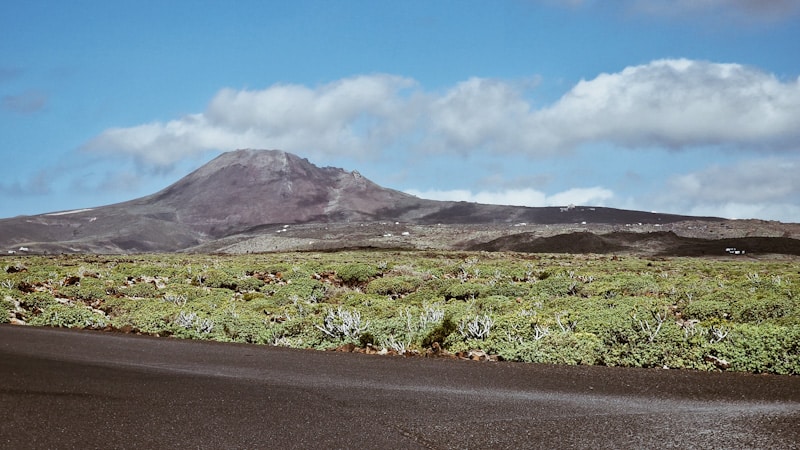
The Canary Islands are famous for their volcanic origin, but it is in Lanzarote where the magmatic character of the archipelago is most evident. On the one hand, because part of its volcanism is relatively recent, and on the other hand, because its sparse vegetation exposes much of its rocky substrate, a landscape of browns, reds and blacks dotted with white spots of its isolated villages. Lanzarote’s beaches are distinguished by their uniqueness and, like the rest of the island, by their volcanic character. The more than 200 kilometres of Atlantic coasts of the island have rocky beaches, as well as white, yellow and black sand, calm waters, and wild seas.
Lanzarote: Useful Information for Your Trip
What is the best time to travel to Lanzarote?
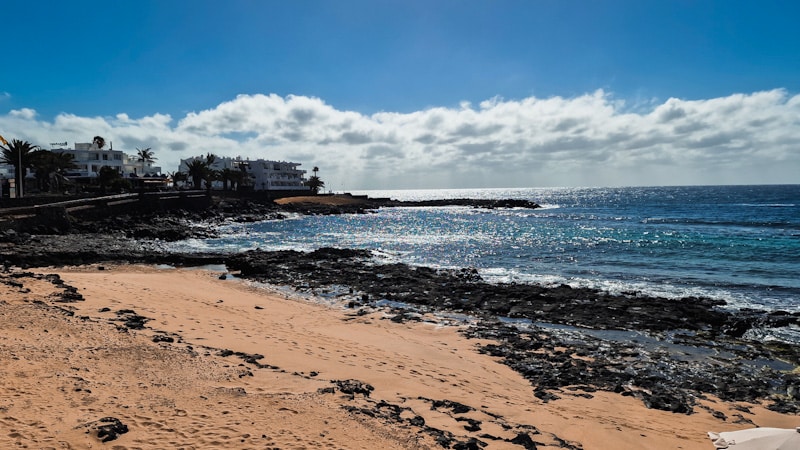
Lanzarote has a spring-like climate all year round. Thanks to the trade winds blowing from the northeast, daily temperatures are never too high, except when the currents from the nearby Sahara prevail, bringing sandstorms and temperatures that can reach 40°C. This phenomenon does not occur frequently and only happens in the summer months.
Minimum temperatures in Lanzarote range from 14°C from December to April and 20°C in September, while maximum temperatures are around 20°C in January and 28°C in August. Rainfall is more frequent during the winter months, between December and February, but with very low values.
The sea temperature in Lanzarote is usually quite cold all year round, ranging from a minimum of 19-20°C in March to a maximum of 24°C in September.
The ideal period for a trip to Lanzarote is from late spring (end of May) to the end of October to enjoy the sea and the beaches. The winter months are not ideal for a beach vacation, given the not-quite summer temperatures. Still, they are pleasant for surfing or discovering the island’s natural wonders and taking a break from the continent’s winter weather.
Discover the best time to visit Spain
How to get to Lanzarote?
Being an island, Lanzarote can be reached mainly by plane and sea.
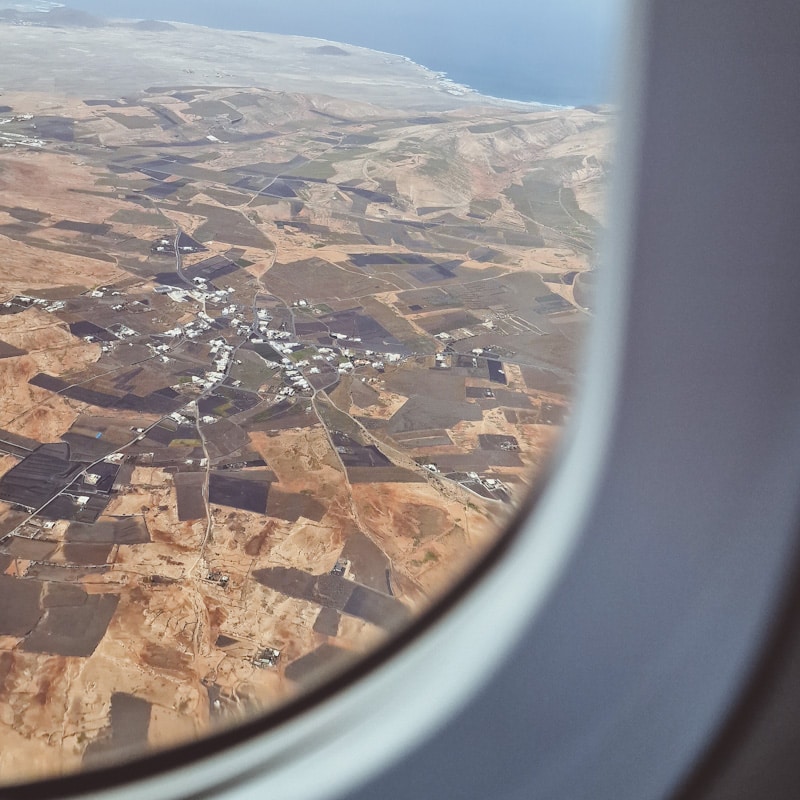
Lanzarote is approximately 1,080 km from the Iberian Peninsula (Cadiz), 250 km from Santa Cruz de Tenerife and 200 km from Las Palmas de Gran Canaria. Here are the main ways to get to the island.
By plane
Lanzarote César Manrique Airport is located 6 kilometres south of the capital, Arrecife. Terminal 1 is served by flights from mainland Spain and many European cities. Terminal 2 is reserved for inter-island flights.
From Spain:
Lanzarote has excellent air connections from Madrid through Iberia Express, Air Europa and some low-cost airlines. Vueling Airlines connects the island with Barcelona, Seville, Bilbao, Valencia and Santiago de Compostela.
Inter-island flights in Lanzarote are operated mainly by Binter Canarias (Las Palmas, Tenerife Sur, Tenerife Norte, La Palma) and Canaryfly (Las Palmas, Tenerife Norte). Some northern and central European holiday airlines offer sporadic seasonal connections to Fuerteventura and other islands.
From Northamerica:
There are no direct air connections between Lanzarote and any American country. That said, it is possible to reach the island with a stopover in Madrid or any other European hub.
By ferry
There are two main ferry ports in Lanzarote, Playa Blanca, in the south, mainly for crossings to Fuerteventura (Corralejo) and Arrecife, for other destinations such as Las Palmas de Gran Canaria, Santa Cruz de La Palma, Tenerife, Puerto del Rosario and Cadiz.
Additionally, the small port of Órzola, in the north of the island, is the departure and arrival point for connections to La Graciosa.
Lanzarote: Where to stay on the island
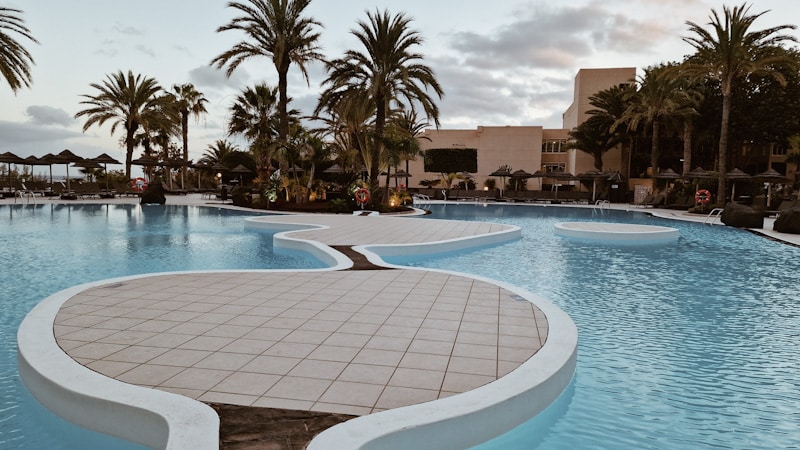
One of the best things about Lanzarote is that the island has plenty of accommodations, from small pensions to large resorts. The main areas where to stay on the island of Lanzarote are:
- Playa Blanca: The most popular seaside resort of Lanzarote. It is very touristy, but its beaches, such as Papagayo, are considered the best on the island. Some of the best accommodations in this area include the Dreams Lanzarote Playa Dorada Resort & Spa and the Hotel LIVVO Volcán Lanzarote.
- Puerto del Carmen: This old port became a tourist centre and the best area to stay in Lanzarote on a budget. Although there are many hotels like Hyde Park Lane, there are also guesthouses and hostels at affordable prices, like Hostal Magec.
- Costa Teguise: It was created for tourists and therefore offers all kinds of amenities, many resorts, parking near the beaches, stores and restaurants. It has a relaxed atmosphere that’s ideal for families. In this area, we recommend the Barceló Lanzarote Active Resort (read our hotel review of the Barceló Lanzarote Active Resort for more information).
- Arrecife: The island’s capital is the largest city in Lanzarote. Its urban centre is charming and will allow you to discover the cultural life of the archipelago. The hotel offer here is vast, with luxurious hotels such as the Arrecife Gran Hotel & Spa and more budget options such as the Lancelot Hotel.
- Caleta de Sebo: It is the main (and only) town on the island of La Graciosa.
Other excellent areas to stay in Lanzarote include Teguise, Yaiza and Órzola.
Getting around Lanzarote
With an area of 846 km² and less than 60 kilometres from one end to the other, distances are rarely a problem to get from one place to another in Lanzarote. There are several possibilities to move around the island, but undoubtedly the car is the most suitable way to get around.
These are some of the different options available:
By car
It is the ideal solution to have more freedom on the island. Renting a car in Lanzarote is much cheaper than on the Spanish mainland, and the island offer all major agencies such as Hertz, Avis or Europcar (mainly around the ports and airport).
Additionally, the local company Cabrera Medina has offices all over the island.
Public transport in Lanzarote
A network of buses connects the different towns and villages of Lanzarote. It is the cheapest way to get around. However, frequencies can be low, so plan your trips well to avoid unpleasant surprises. If you plan to use this means of transport regularly, you can buy a season ticket to save on fares.
Timetables, prices and other details are on the company’s website.
Organized activities and tours
Another way to get around Lanzarote without a car, and that does not force you to be aware of public transport schedules, is to hire guided tours to the main attractions of the island. Most of these organized tours offer hotel pick-up service.
The main advantage of this type of tour is that you can discover places like the Timanfaya National Park and the island of La Graciosa or even see dolphins at sunset without having to travel on your own.
Book activities, tours and guided tours in Lanzarote
Attractions on the Island of Lanzarote: Things to See and Do
Among the main attractions of Lanzarote is the Timanfaya National Park, a truly unmissable site of the island. Lanzarote also has fascinating monuments and museums to discover. Many of Lanzarote’s cultural attractions are the work of César Manrique, a famous artist, sculptor, architect and activist who left his mark on the island. Among the works of Manrique is the Mirador del Rio, which offers an incredible view of the island of La Graciosa or the Cactus Garden, with striking contrasts of colour.
As you would expect, Lanzarote is also home to many natural wonders, spectacular caves, salt flats, a green lagoon and splendid beaches. We invite you to discover these must-see attractions in Lanzarote, an island with landscapes you won’t see anywhere else.
1. Timanfaya National Park
If there was only one attraction in Lanzarote, it would be the Timanfaya National Park. It is one of the most popular sights in Lanzarote and is easily accessible for visitors.
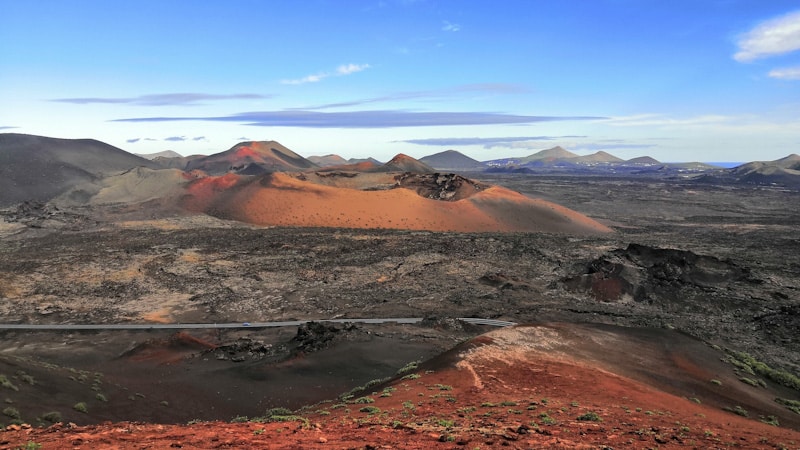
Timanfaya National Park consists of an area of 51 km² of protected land covered with rock and volcanic elements. It is the result of two eruptive processes, one between 1730 and 1736 and the second in 1824, and its main highlights are the remains of lava flows that extend for several kilometres. This volcanic landscape varies according to the age of the different eruptions. In this magical place, craters and cones mingle in extraordinary shades of brown, ocher, yellow, red and black.
Once in Timafaya, in the middle of this lunar landscape with hardly any vegetation, you understand why the island has been baptized the “land of volcanoes”. It is truly a spectacle you cannot see in many places.
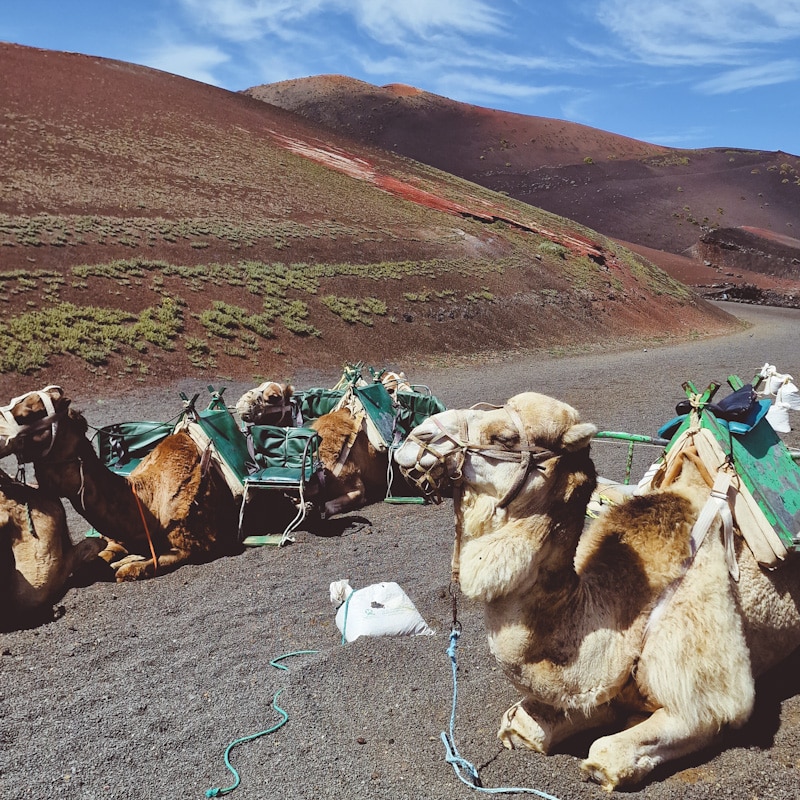
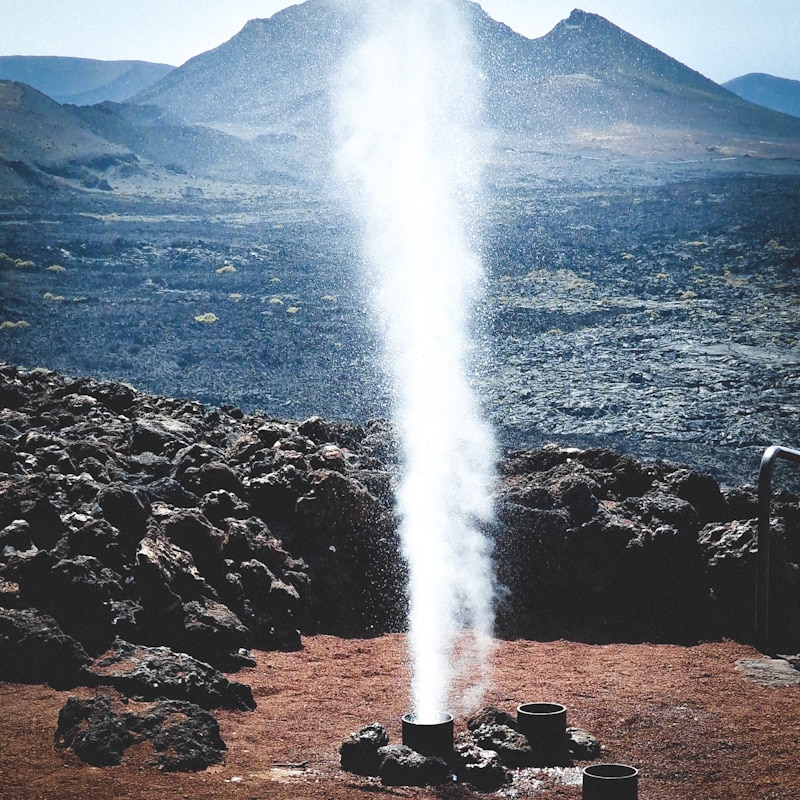
The only way to discover the park is by bus. The entrance fee gives you access to the guided tour and, although it can be a bit crowded, it allows you to admire these fabulous landscapes. The bus tour lasts about 45 minutes and includes Spanish, English and German commentary.
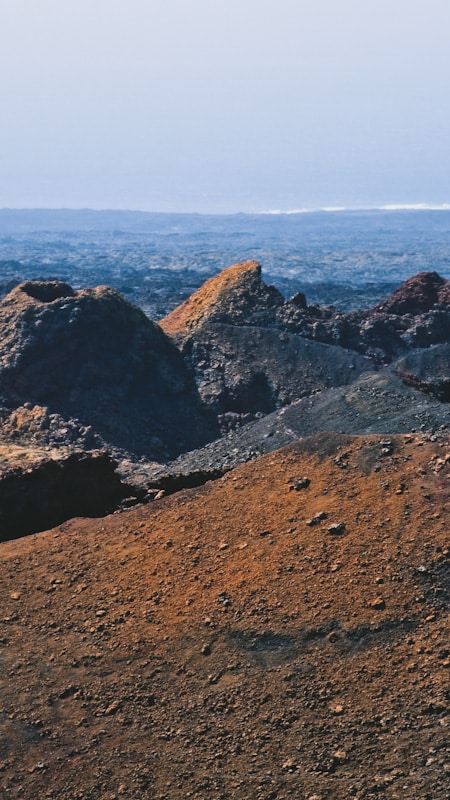
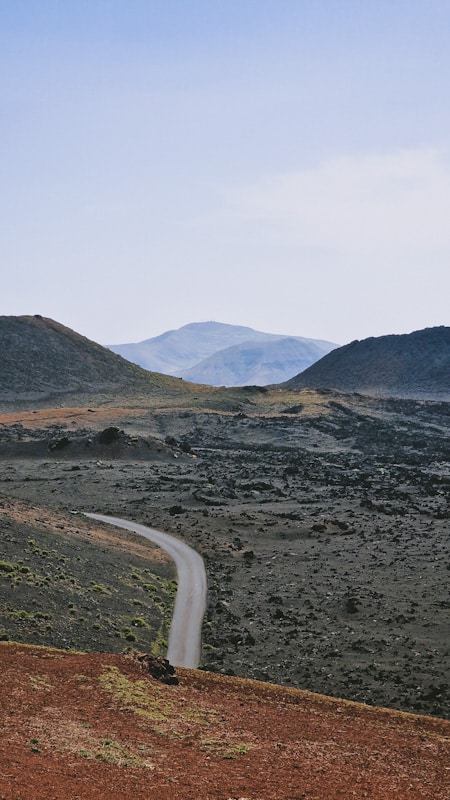
Hiking is forbidden anywhere in the park, but there are some walking circuits to stretch your legs. You can head to Madera Beach, near the village of Tenesar, where a trail runs along the coast.
Best Timanfaya Park Tours
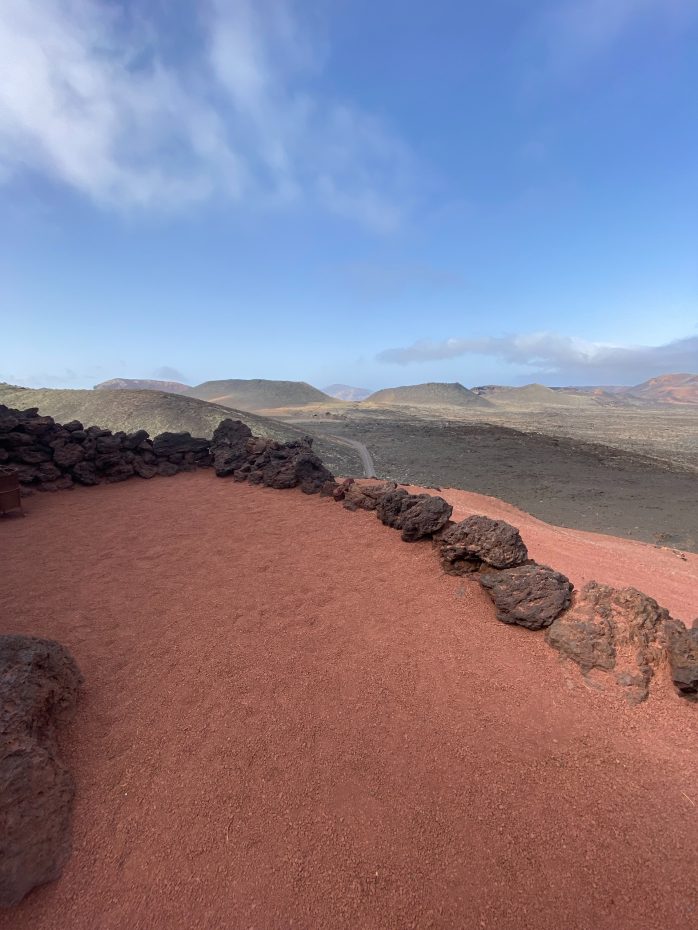
As mentioned above, much of the landscape of this area of Lanzarote was formed during major eruptive episodes in the eighteenth and nineteenth centuries. Of these, the most important occurred between 1730 and 1735.
One night, on September 1, 1730, between 9 and 10 in the morning, the Cuervo volcano opened and began to spew lava. The eruption was the beginning of the Timanfaya eruptions that, at different times and intensities, transformed the physical reality of Lanzarote. The priest of Yaiza, Andrés Lorenzo Curbelo, left testimony of the events from the beginning of the eruptions until the population of the region had to leave between 1731 and 1732.
After pauses and restarts, the eruptive episode continued until April 1735. Scientists estimate that the volume of lava could have reached one billion cubic meters, completely modifying the morphology of the island.
2. Los Volcanes Natural Park
Volcanic landscape with strange and interesting formations that emerged from the solidification of lava, volcanic cones, tunnels, lava lakes and hornitos (small cones of solidified magma).
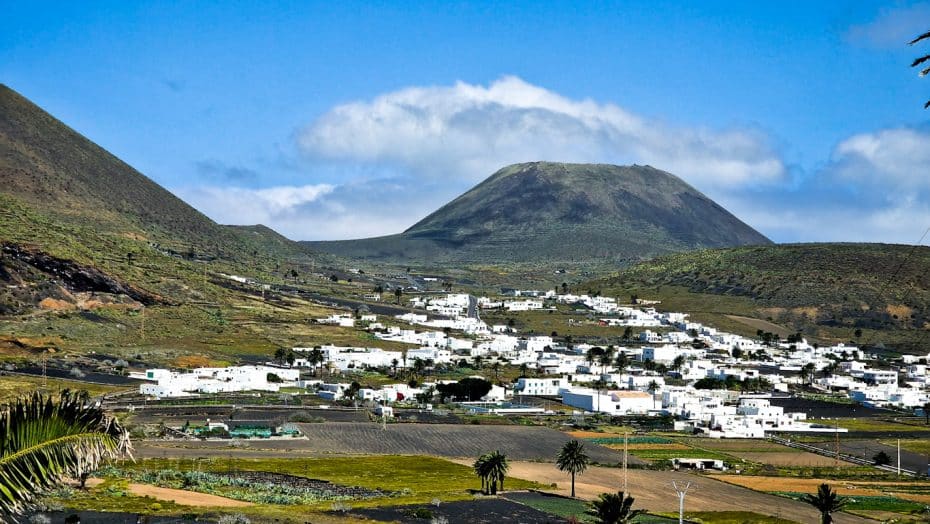
It is located in Tinajo, in the western part of the island of Lanzarote.
The landscape it offers is simply breathtaking. The vegetation in this area is very scarce and is only present in the oldest areas of lava solidification, where there are about a thousand different species of lichens.
In terms of fauna, several species of reptiles and birds stand out in the park, which have adapted perfectly to the harsh and strange conditions of the environment. In fact, the park has been declared a Special Protection Area for Birds.
Declared a natural park in 1987, Los Volcanes has an area of 10,158 hectares distributed among the municipalities of Tinajo, Tías and Yaiza.
3. Mirador del Río
The Mirador del Rio is located on the cliff of Famar, at the northern tip of the island and 475 meters high.
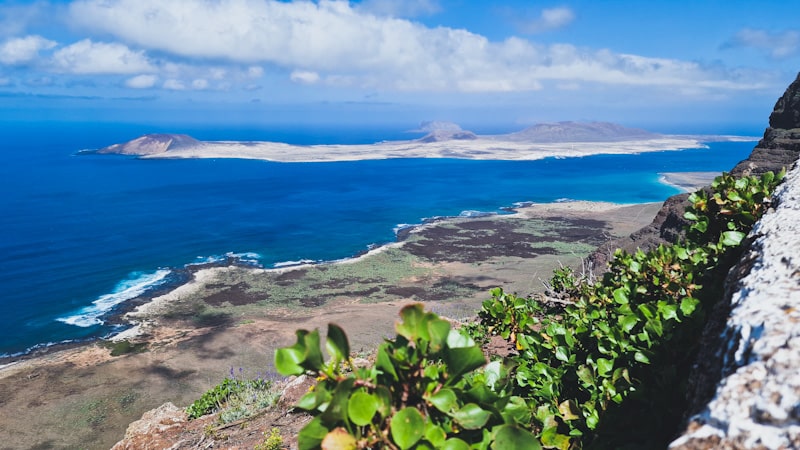
This impressive viewpoint offers an extraordinary view of the island of La Graciosa and the volcano of La Corona and was designed by César Manrique, who totally integrated his architecture into the natural elements of the volcanic mountain.
A curiosity: Despite its name, “El Rio” is actually the strait that separates Lanzarote from La Graciosa. With little more than a kilometer wide, this arm of the sea is the scene of annual swimming competitions and the starting point of the hiking trail “Camino de las Gracioseras”.
You enter this site through a corridor with bright white walls with scattered plants and niches displaying beautiful ceramics. At the end of this corridor, you will find the large veranda with huge windows offering the most spectacular views of La Graciosa. Near the fireplace, a beautiful staircase leads to the souvenir store and the panoramic terrace, the highest point in the area.
4. Cueva de los Verdes
The Cueva de los Verdes is part of the volcanic tube generated after the various eruptions of the Corona volcano and connects the cone of the volcano with the ocean for 6 kilometers.
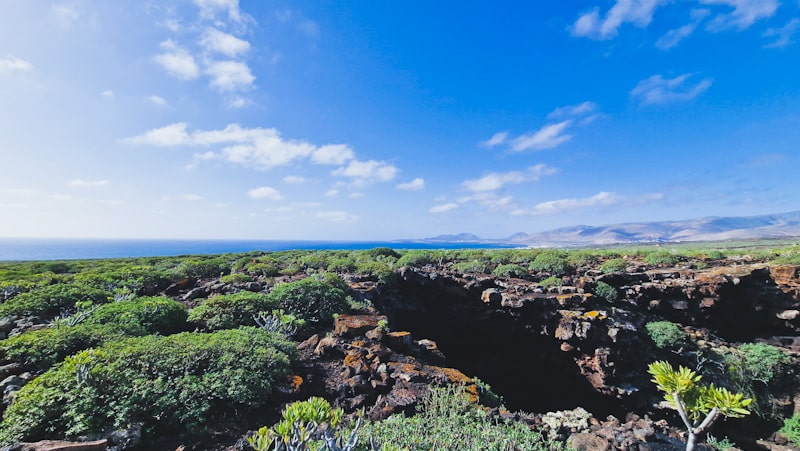
The lava tube extends to the ocean and then under the Atlantic Ocean, forming what is known as the “tunnel of Atlantis”, the longest known underwater volcanic lava tube on earth. A one-kilometer low-difficulty tour allows visitors to discover this extraordinary natural phenomenon.
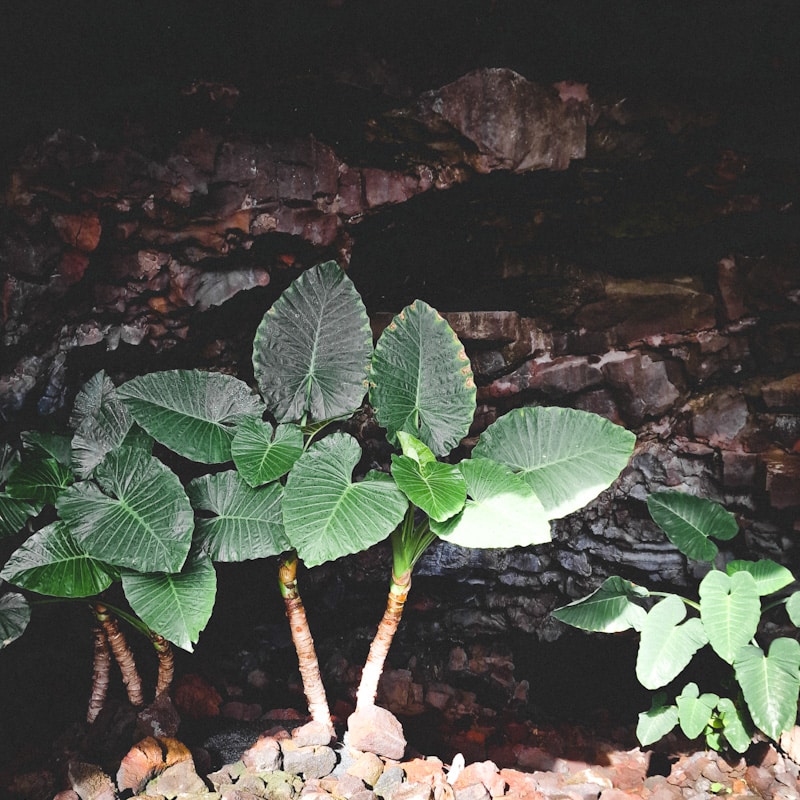
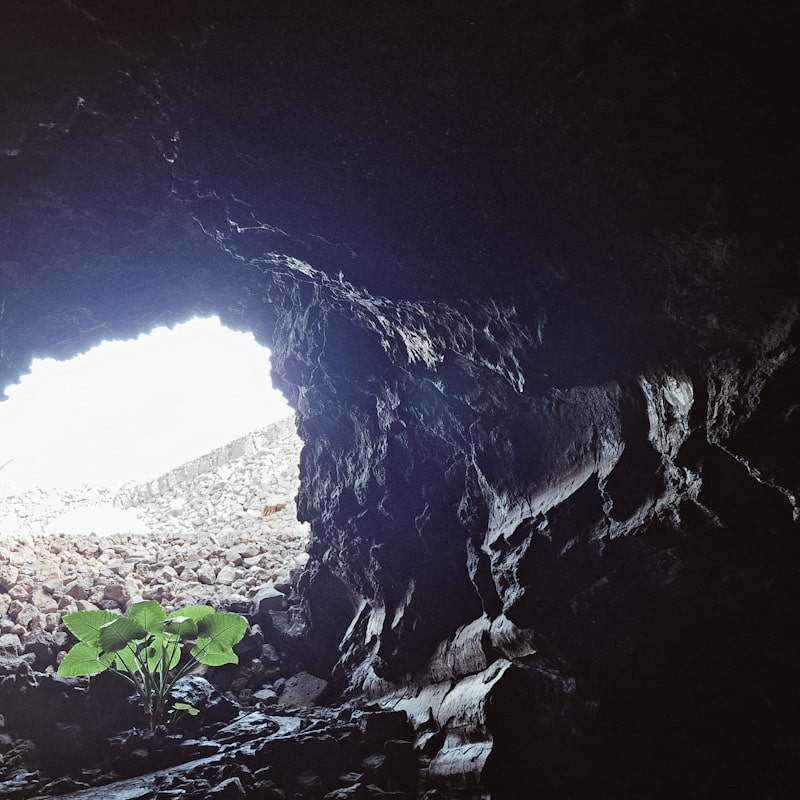
The galleries overlap on several levels and can reach 50 meters in height. The rocks of the cave have a multitude of colors, black, brown, ochre, yellow and red due to the oxidation of the iron contained in the basalts. There is no need to cover up, the temperature is quite mild and around 19°C. To liven up the visit, the guide makes you discover a surprising optical effect known as the “secret” of the cave.
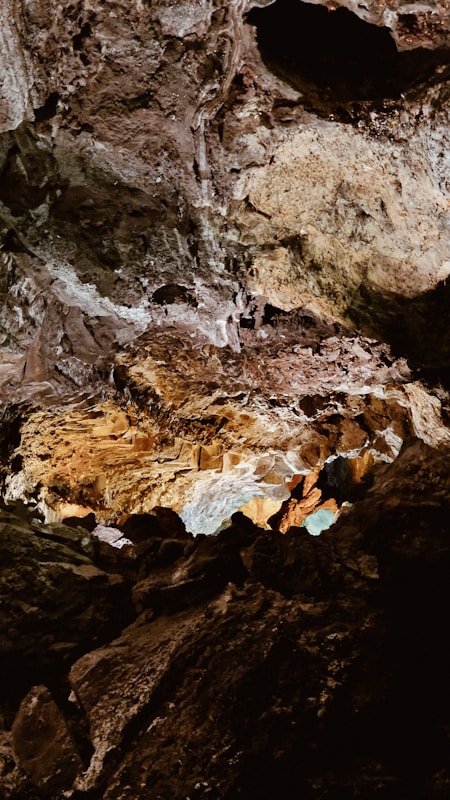
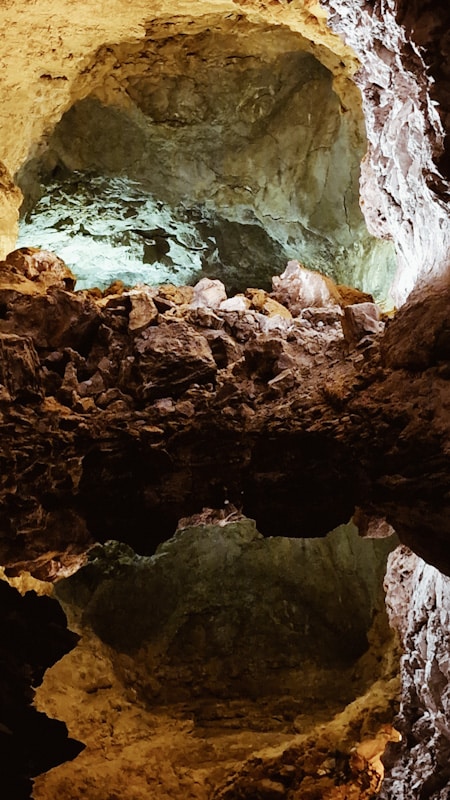
And although any visit to the bowels of the earth would be a unique experience in itself, La Cueva de los Verdes is not only a natural space, but an installation by local artist Jesús Soto. Soto is the architect of the design of the tour, the lights, and the music. A whole sensory experience created to intensify the experience.
The only drawback to this tour is that it is done in groups of up to fifty people with a guide. Groups are formed as visitors arrive, with a waiting time of up to 20 minutes. However, it is well worth it.
Fun fact: The name Cueva de los Verdes has nothing to do with the colors you can find inside. There are many versions of the history of this name. According to Charro Sosa, the Jews, who were called “the greens”, hid there during the Christian persecution. It is also said that the Verde family, the last owners of the cave’s land, lived there.
5. Jameos del Agua
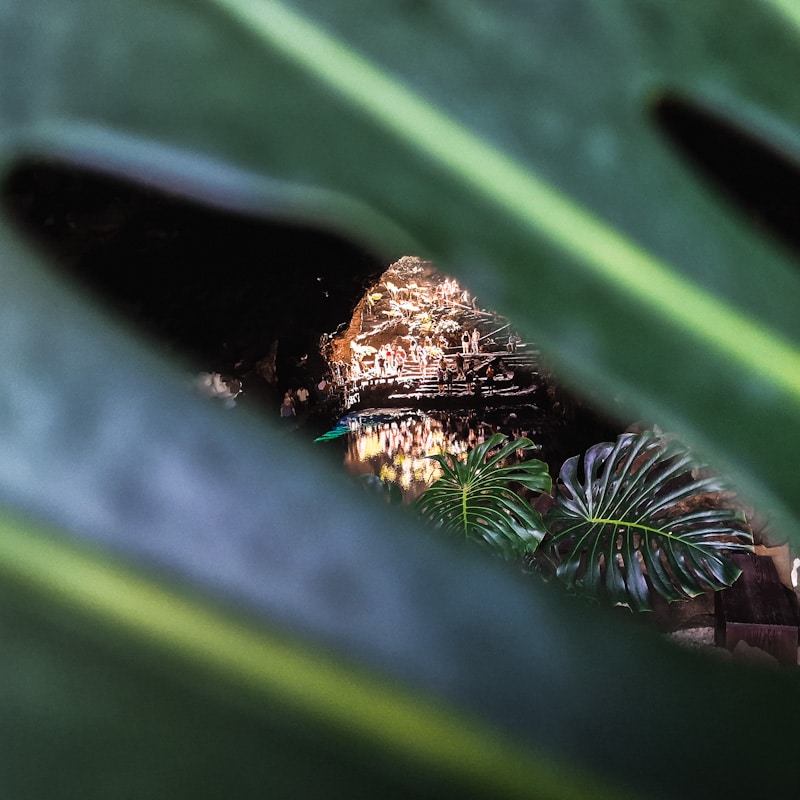
Among the must-see attractions in Lanzarote we can not fail to include the famous Jameos del Agua, some particular formations born after the eruptions of the Corona volcano. Together with the Cueva de los Verdes they form part of the lava tunnel that reaches the sea and is located near the coast.
This incredible place was created from scratch by César Manrique, who transformed this area created by the collapse of the tunnel.
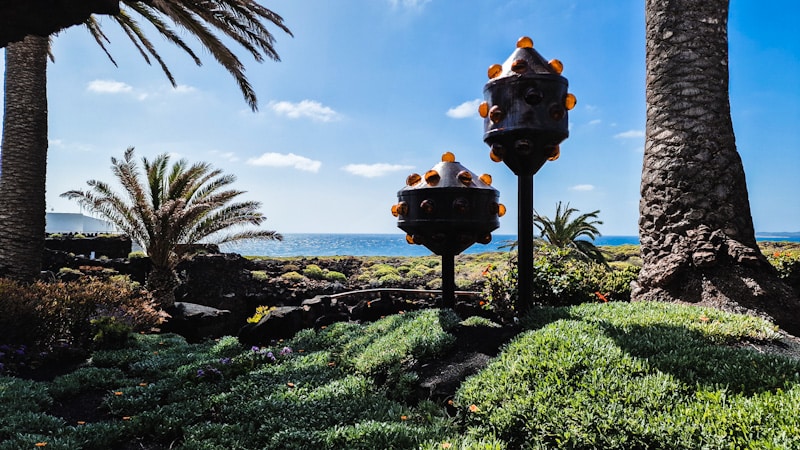
Today you can visit an incredible cave: very quiet, with turquoise blue water, where small crabs live.
The word “Jameo” indicates the hole produced by the collapse of the roof of a lava tunnel. The tunnel, more than 6 km long, has an underwater part of 1.5 km long called “Atlantis Tunnel” and can only be visited in part.
Inside the Jameos del Agua, in the Jameo Chico, there is a bar and a restaurant where it is possible to eat. It is also open for drinks in the evening on Fridays from 19:00 to 00:00 hours.
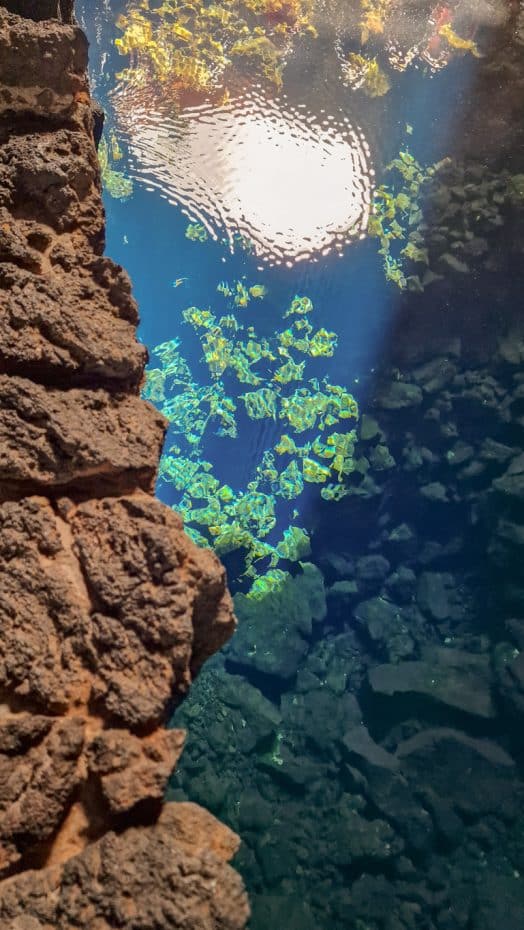
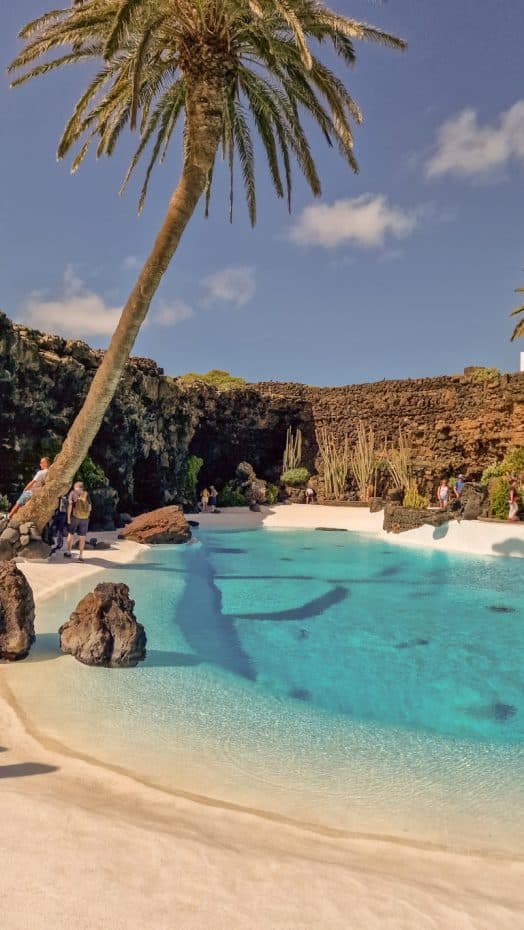
6. Cactus Garden
This is a wonderful garden with 4,500 cacti from all over the planet, which César Manrique wanted to create to seal once again the combination of art and nature and restore the splendor to the volcanic area of Guatiza, in the municipality of Teguise.
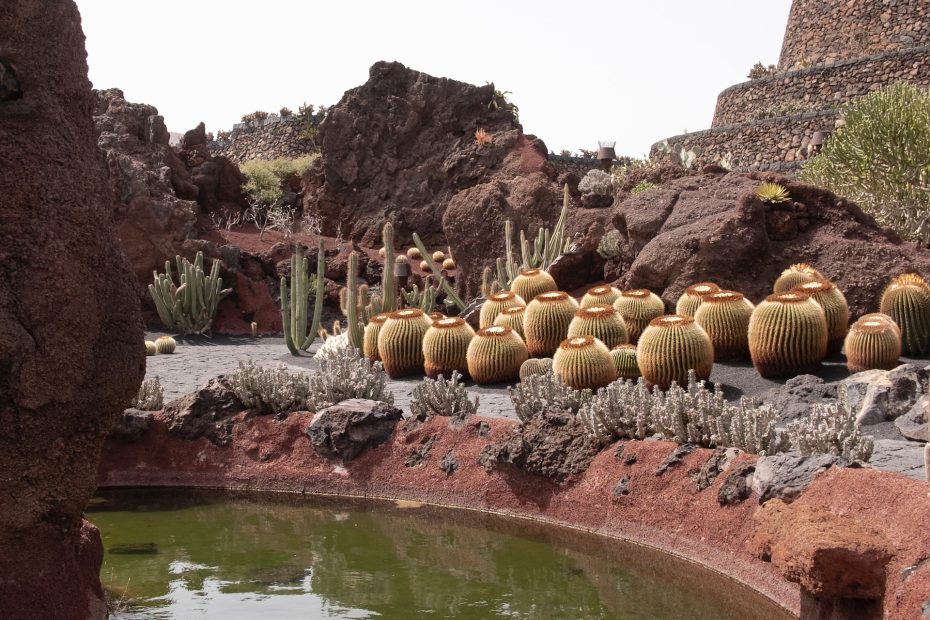
The cactus garden was inaugurated in 1990 and represents the last great work in which Manrique worked in Lanzarote.
After passing the ticket office, you will find yourself in an arena, a kind of lush amphitheater, with prickly pear cactus, thorny plants and spectacular specimens, among which you can get lost for hours. There are terraces that allow you to explore the complex in all its breadth and discover the beauty of the place from all angles.
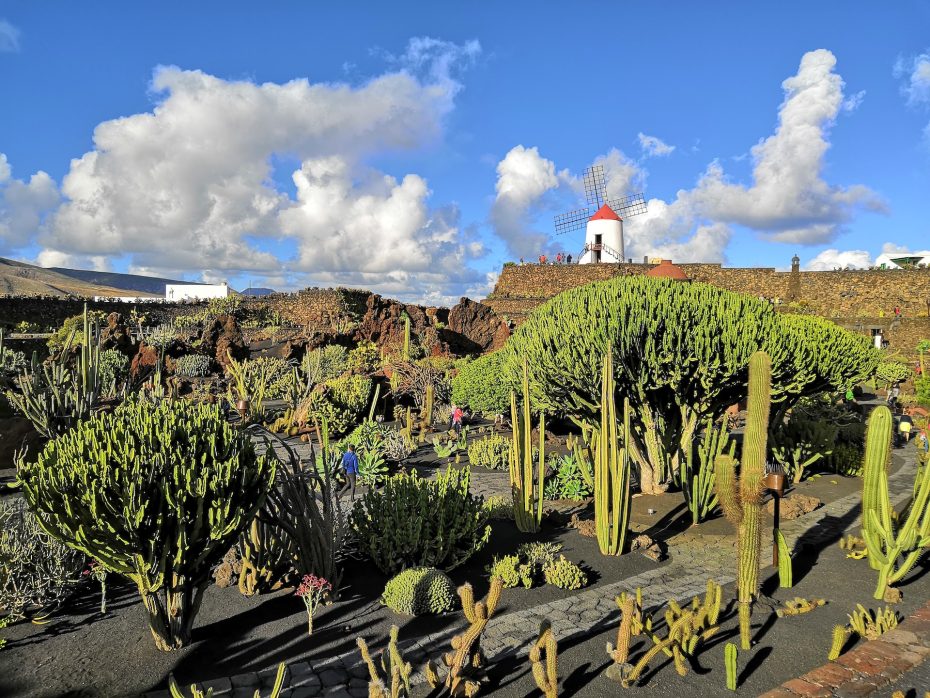
On top of the hill in front of the entrance there is a small windmill, which you can easily reach and from which you will enjoy the best view of the garden. There is also a cafeteria with panoramic views and a small store.
7. César Manrique Foundation
The César Manrique Foundation is a special place.
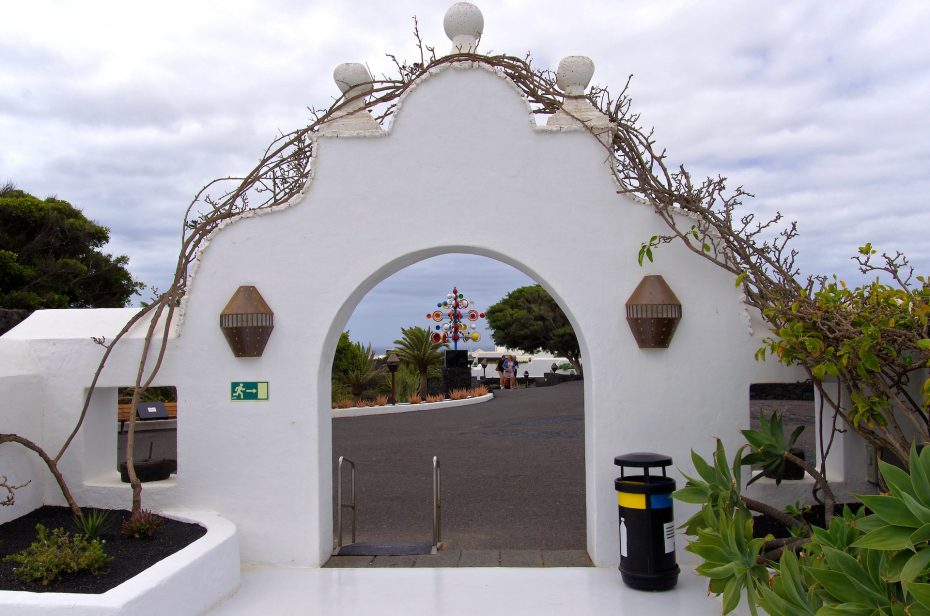
César Manrique had his house-museum built in five natural air bubbles trapped in the lava. It is a building composed of several architectural parts, harmoniously assembled by the artist. Small rooms carved into the rock and painted white and furniture that mixes the pop style of the 60s and 70s with natural elements.
There are galleries with works by Manrique and Picasso on display, a swimming pool, intriguing and colorful environments, a lush garden with mosaics and giant cacti, a small bar and a souvenir store.
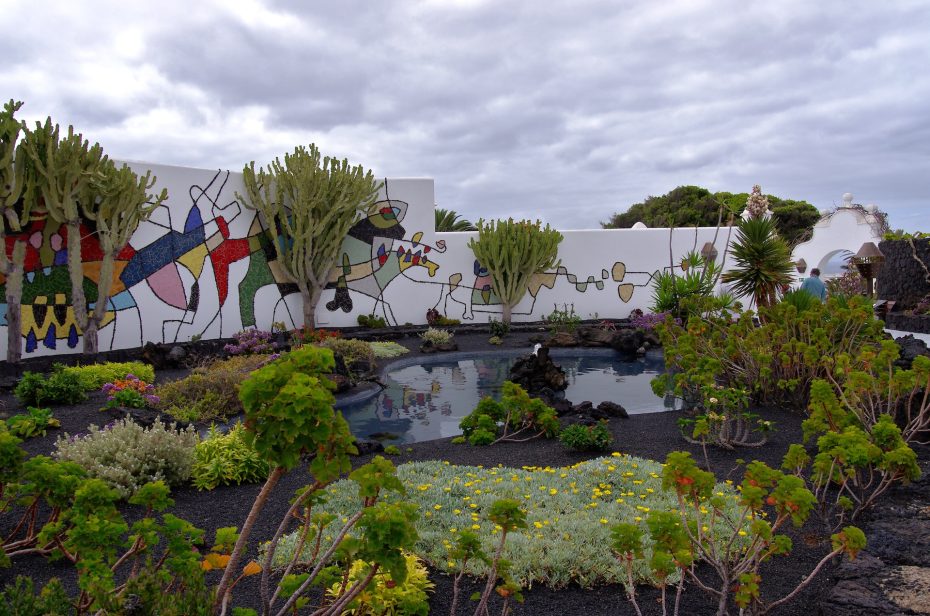
It is an essential visit in Lanzarote. Open Monday to Saturday from 10:00 to 18:00 and Sundays from 10:00 to 15:00.
8. Teguise
One of the things you can not miss in Lanzarote is to spend Sunday morning wandering through the colorful stalls of the open-air market of Teguise.
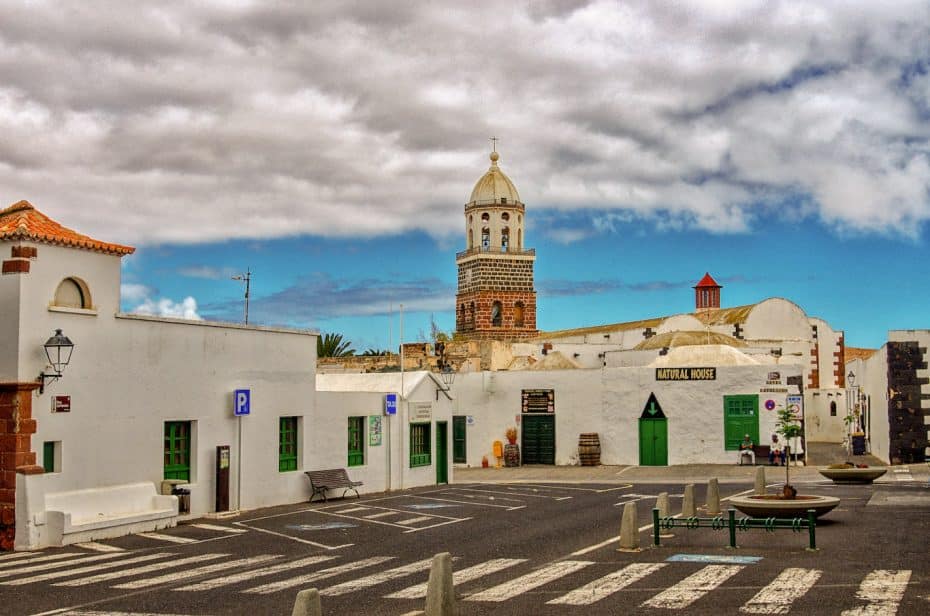
If you want to avoid the crowds, we recommend you to visit Teguise during the week, when you can appreciate this little gem in peace and without crowds.
The town of Teguise, the former capital of the island, is famous for its green doors and traditional architecture and is a popular meeting point for tourists and locals. There are small kiosks where you can sample typical Canarian delicacies and stock up on cactus jam, lunch on gourmet Canarian dishes or shop at some of the stalls selling vintage clothing, books, art and crafts.
9. Papagayo Coast and southern beaches
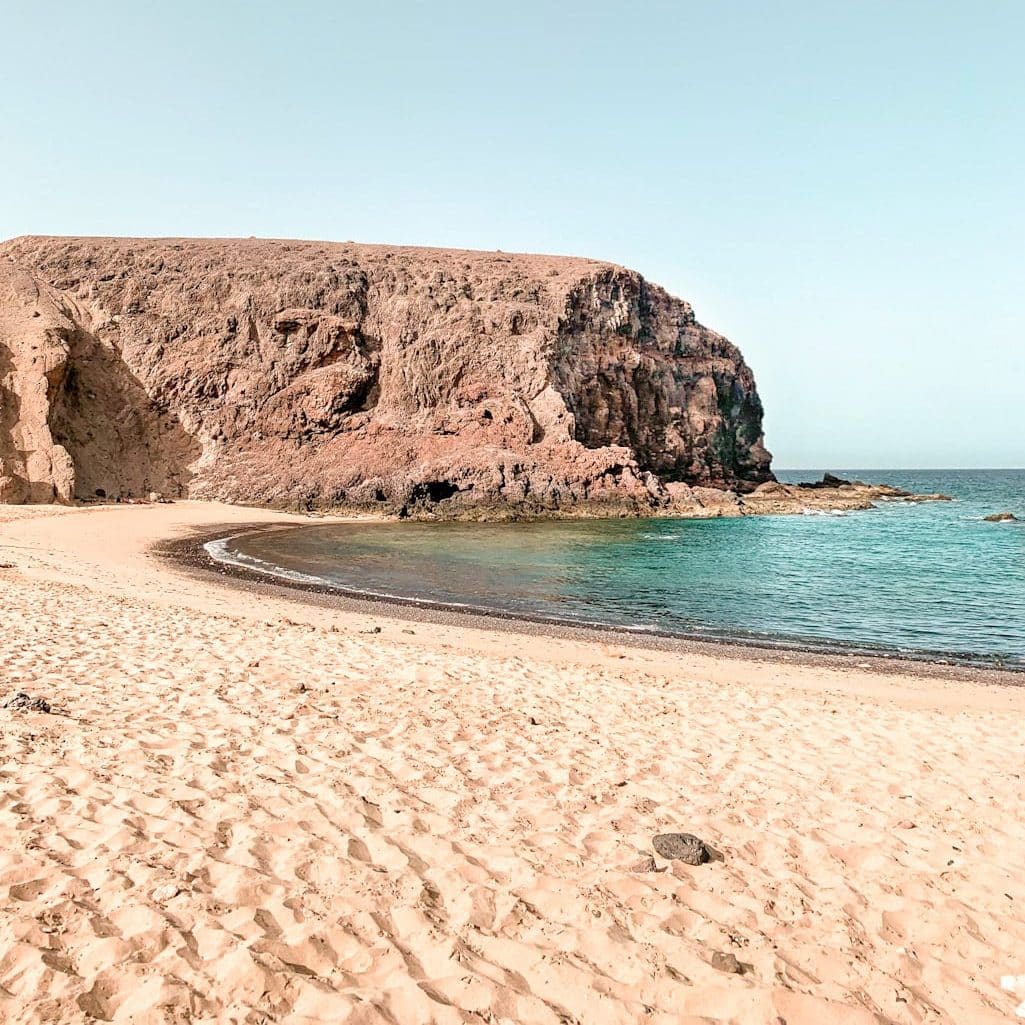
There are 7 beaches in the south end of the island that you have to visit in Lanzarote. Playa del Papagayo, and in general the Papagayo Coast in the south of Lanzarote is an incredible natural park, to the point that it has been included several times by tourism magazines in the list of the most beautiful beaches in the world.
These beaches stand out for their golden sand, framed by hills of volcanic rock and bathed by a crystal clear sea.
Beaches of the Papagayo Coast:
- Afe Beach
- Beach of Mujeres
- Pozo Beach
- La Cera Beach
- Papagayo Beach
- Congrio Cove
- Puerto Muelas Beach
The beaches of the Papagayo Coast are also very popular among the naturist public.
10. El Golfo and Charco de los Clicos
The Charco de Los Clicos is a small natural lake located a few meters from the sea on a beach on the western side of the island of Lanzarote.
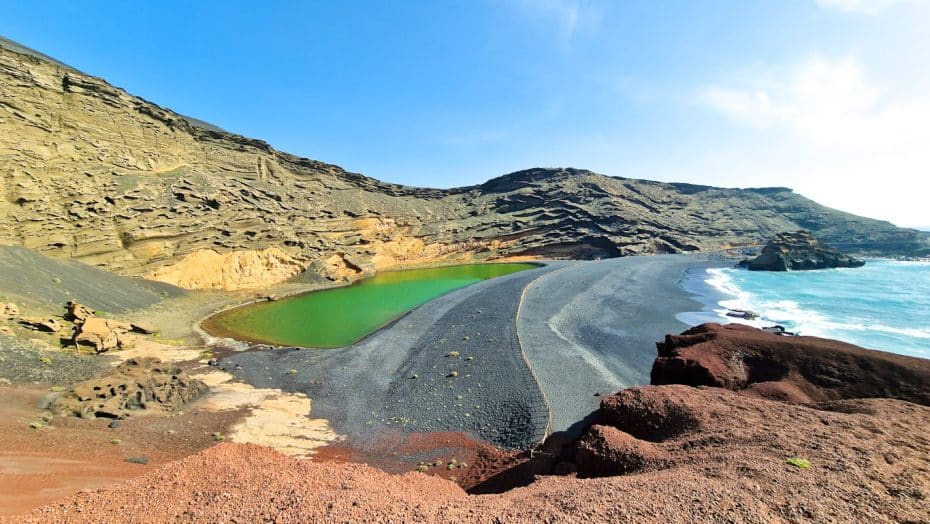
What has made it famous is its striking green color, a tone that it acquires under certain conditions due to some particular algae that live in its interior.
11. Janubio Salt Flats
Continuing along the road that passes through the Green Lake you will find yourself in front of a network of salt terraces, the beautiful salt flats of Lanzarote.
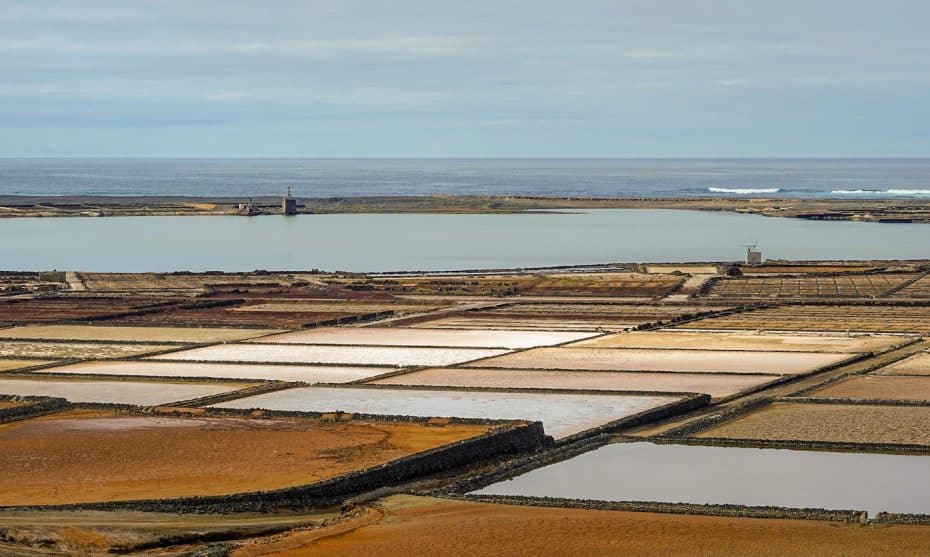
They are located near a volcanic beach and the very strong winds of the area carry the salt from the sea water to these colorful pools. The iridescent reflections of the sun on the white salt create a checkerboard of different shades and beautiful landscapes.
There is also a viewpoint from which you can take the best pictures.
12. Vineyards of La Geria
One of the most beautiful landscapes you can find in Lanzarote is undoubtedly La Geria.
A landscape halfway between the moon and Mars, of a breathtaking beauty, a must-see place during a trip to Lanzarote.
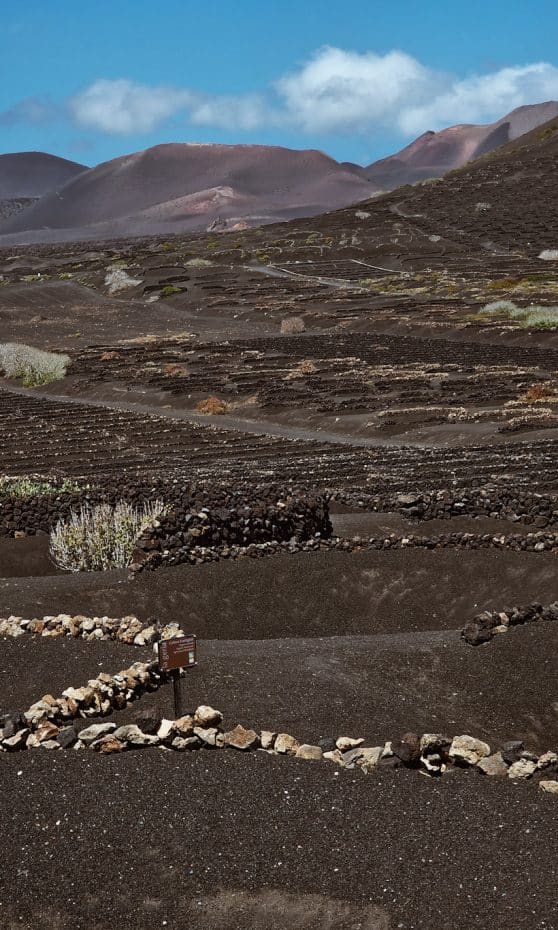
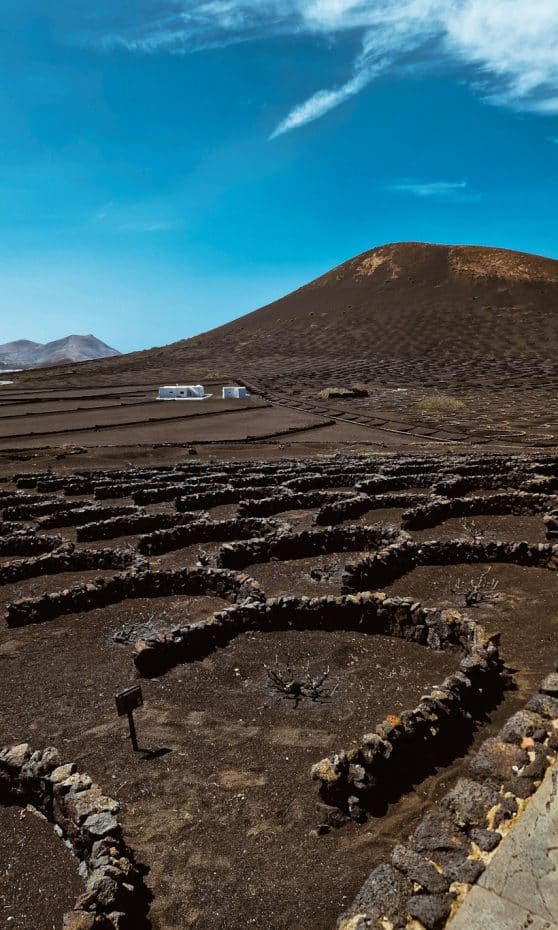
In this area is grown the famous Malvasia Volcanica, the best wine of Lanzarote. Millenary vines that grow in an arid land between lava lapilli.
These vine growing techniques are defined as “heroic” because of the difficulty involved in such a hostile terrain. The grapes are harvested entirely by hand, due to the lack of water and the constant presence of wind.
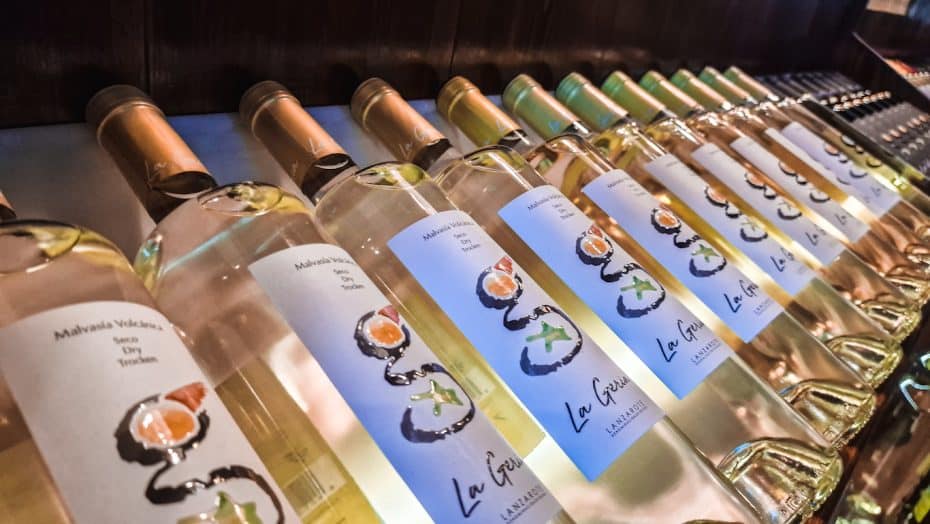
We advise you to take the road that crosses La Geria at different times of the day, the landscape changes as the light hits the black volcanic earth.
One of the most visited wineries in Lanzarote is undoubtedly the Bodega de La Geria, the parking lot is usually crowded with cars and buses.
The room where the wines are exhibited and where the tastings take place is very nice, on the sides the wine barrels and the floor covered with lava gravel make the space really interesting.
The vineyards of La Geria are among the most beautiful in the area.
13. Caleta de Famara
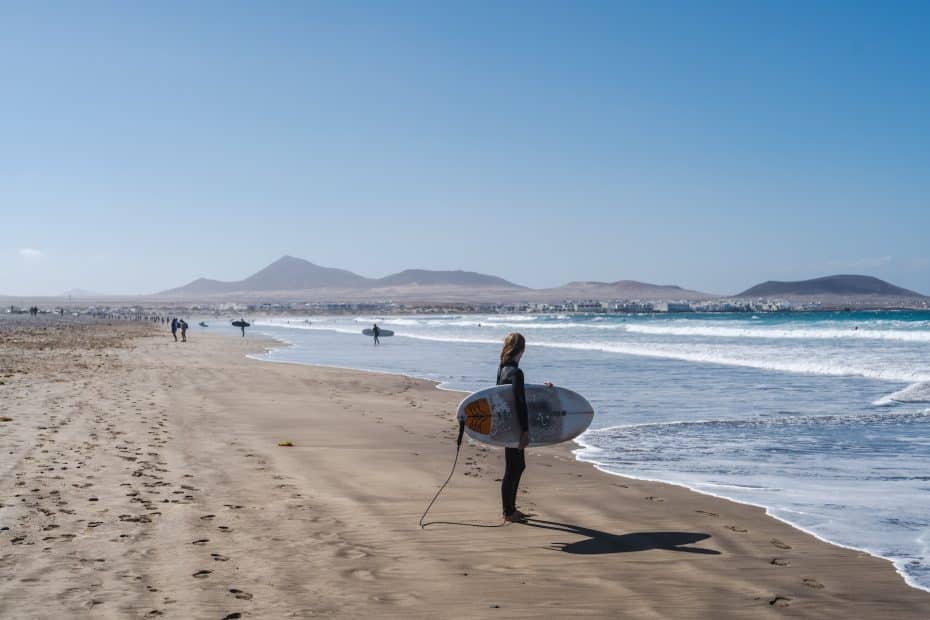
Caleta de Famara is an old fishing village that seems to have stopped in time.
Famara is known for famous beaches such as San Juan and Playa de Famara, an extension of volcanic sand of about 6 kilometers. It is located next to a cliff over 600 meters high known as the Risco de Famara, and is a popular spot for surfers.
The village itself has a series of bungalows arranged in a semicircle and built a couple of decades ago. Also noteworthy is the small port, used mainly by private boats and small commercial fishing boats that once were the soul of Famara.
14. Monument to the Peasant
Recovering the original idea of the artist César Manrique, the Casa-Museo del Campesino is an immersion in the popular culture of Lanzarote that offers an overview of the architecture, agriculture, crafts and traditional cuisine of the island.
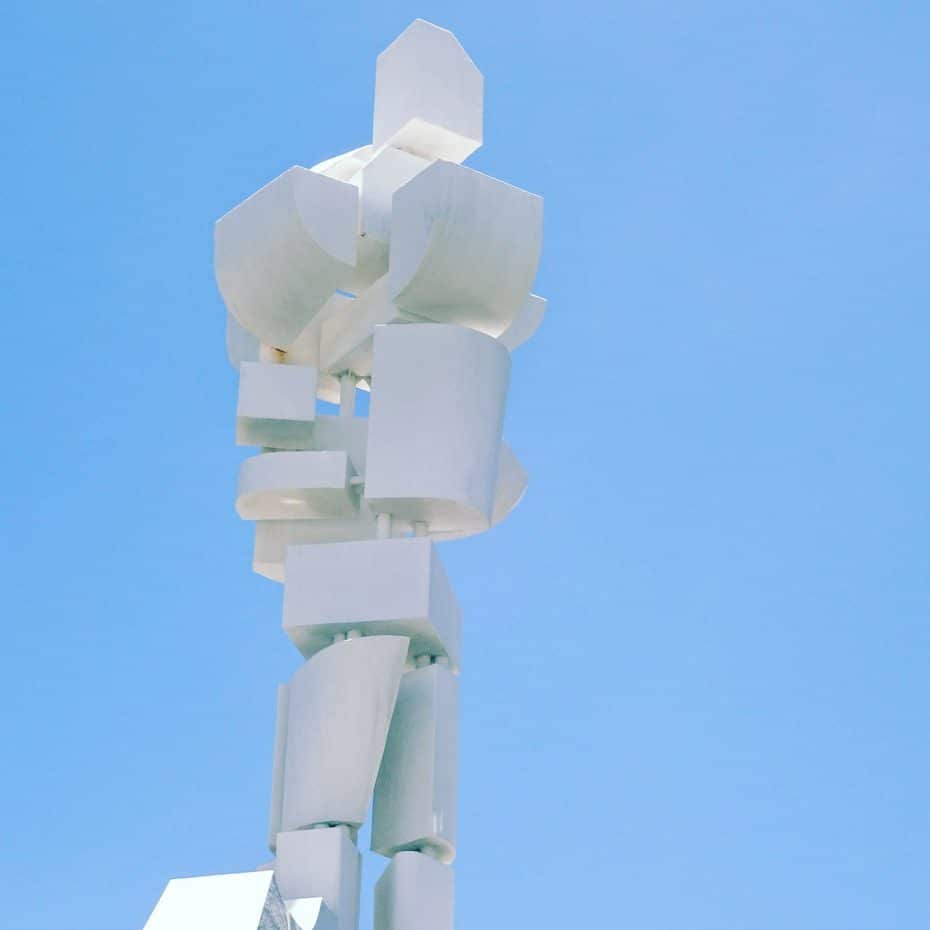
As a culmination, the Monument to the Fertility, a work of avant-garde art used by César Manrique.
15. San Ginés Pond
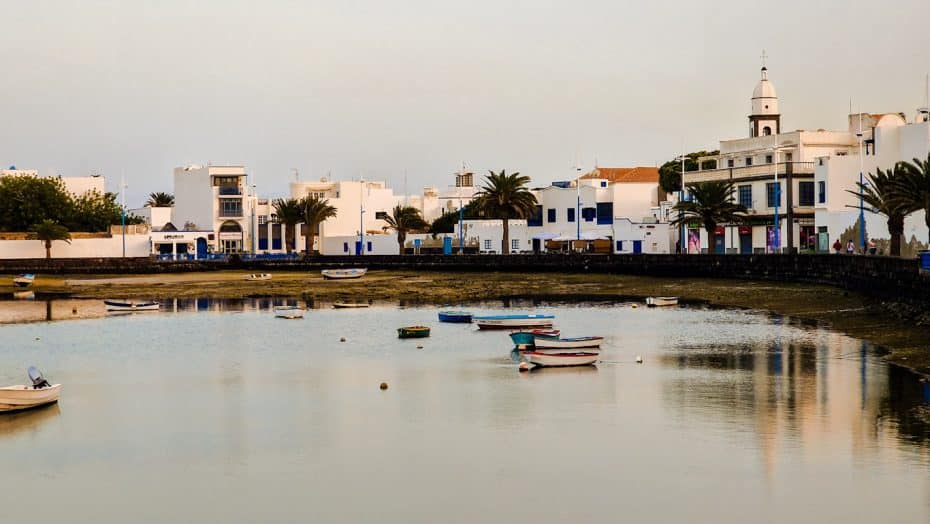
On the side of the old town is the Charco de San Ginés, a very scenic little port where the sea enters directly into the city.
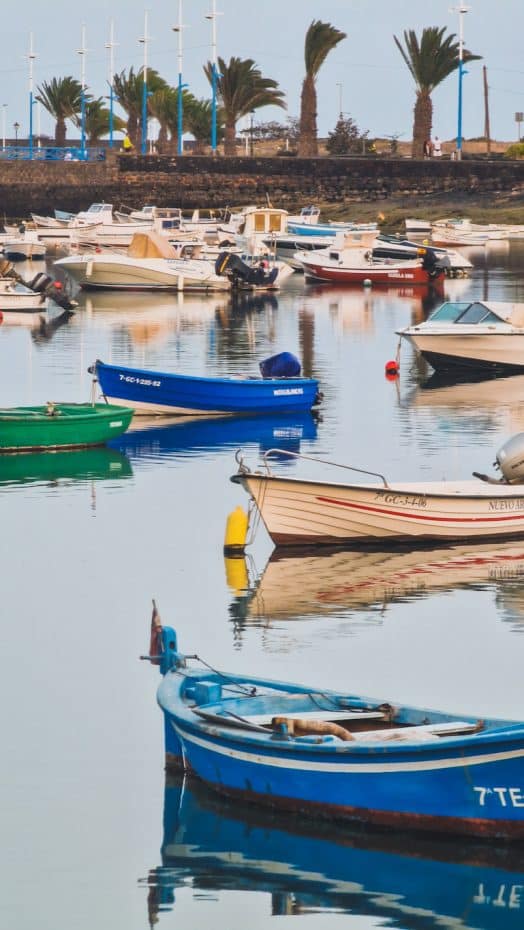
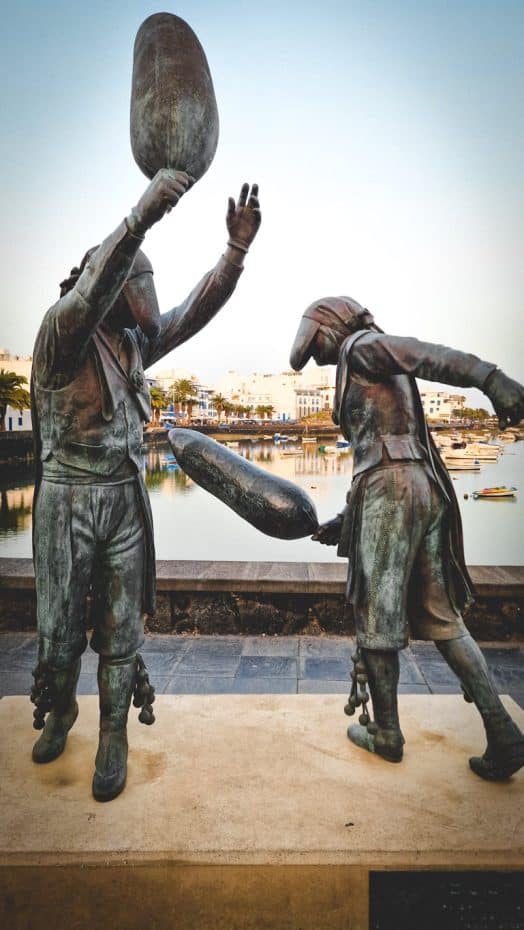
The charco is the heart of the old fishing village and where today the smallest boats are kept. Modernized according to a project by César Manrique, it is a landmark in the city.
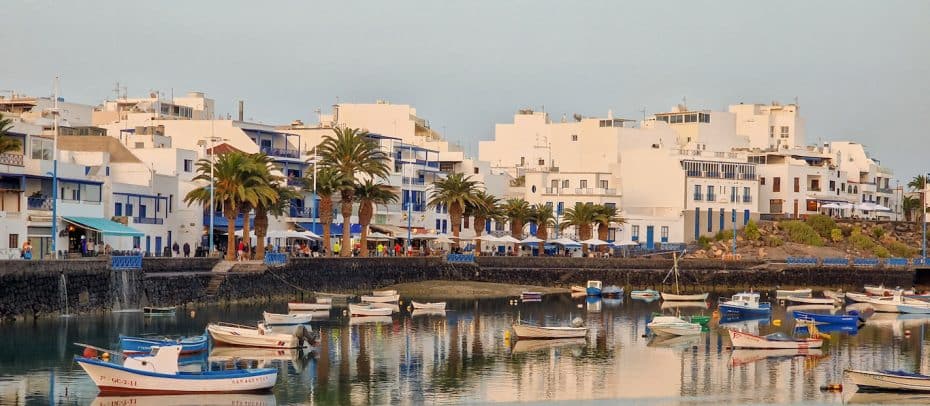
A vibrant nightlife has developed around the water thanks to a series of small restaurants and cafes that fill up from morning until late at night.
The area is completely pedestrianized and often on weekend evenings you will also find markets and street performers.
At sunset, it is one of the best areas in Lanzarote to take photos, with the lights of the city reflected in the water and the scenic fishing boats floating in the lagoon.
16. Playa del Reducto beach and views from the Arrecife Gran Hotel.
Arrecife has a beautiful urban beach, Playa del Reducto, with golden sand and calm, crystal clear waters.
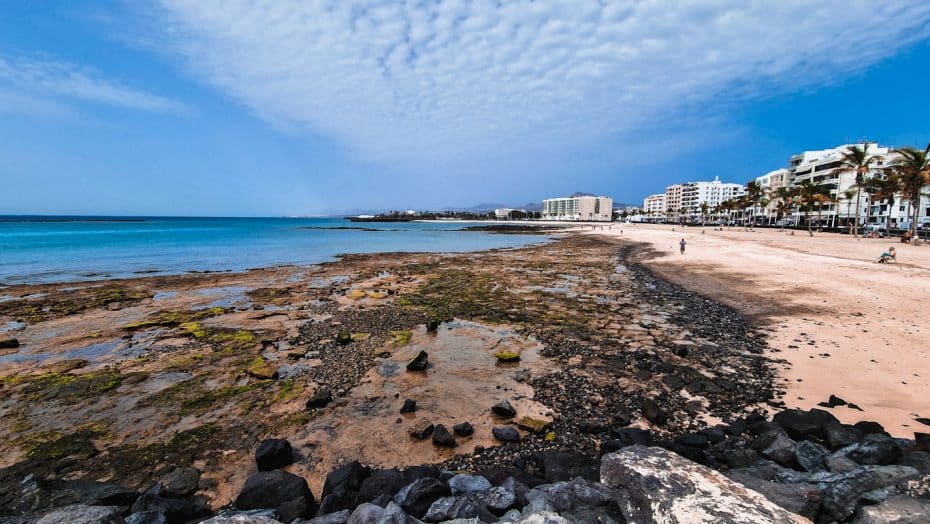
It is a relatively large beach, so there are usually no space problems even in high season.
Next to the beach is the Arrecife Gran Hotel & Spa, a luxury accommodation with a restaurant on the 17th floor that offers some of the best panoramic views of Arrecife.
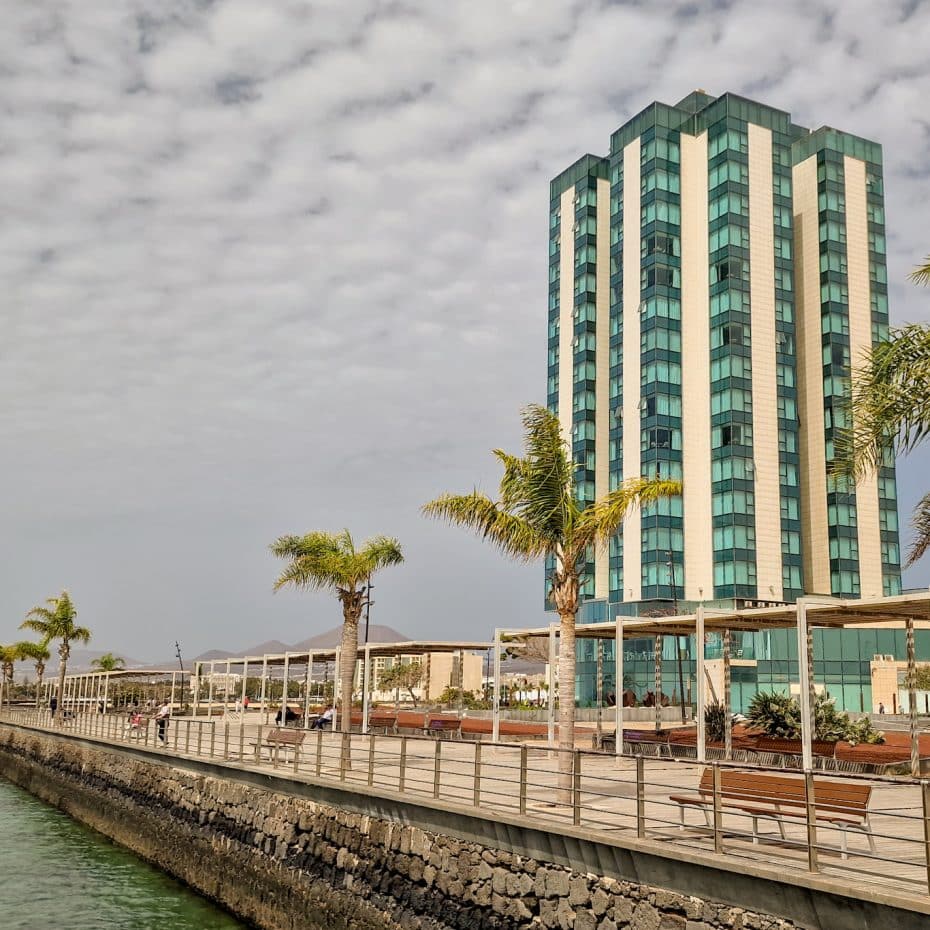

The restaurant’s food is exceptional and mixes Canarian specialties with the best Mediterranean cuisine.
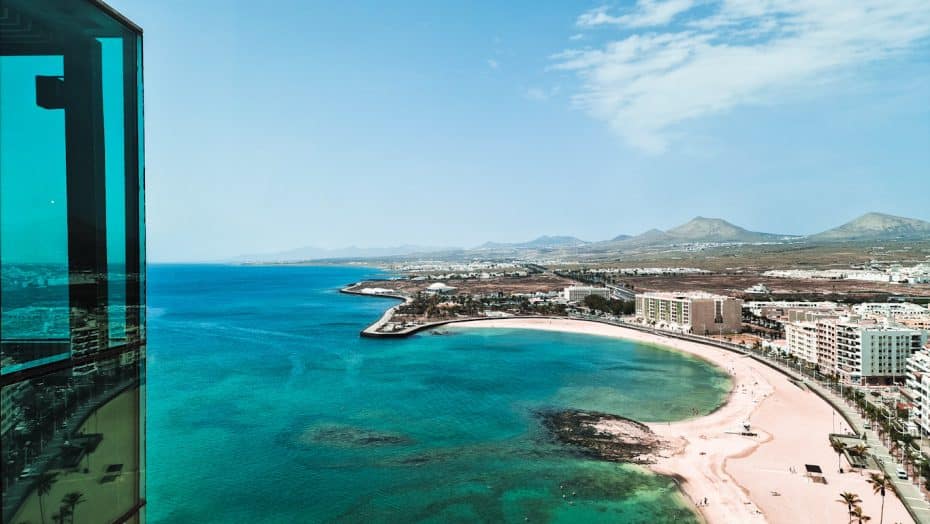
17. San Gabriel Castle and Puente de las Bolas (Bridge of the Balls)
The Castle of San Gabriel is located on a small island called islet of the English, and can be reached by the bridge of the Balls, a small drawbridge with two cannonballs on its pillars that gives it its name.
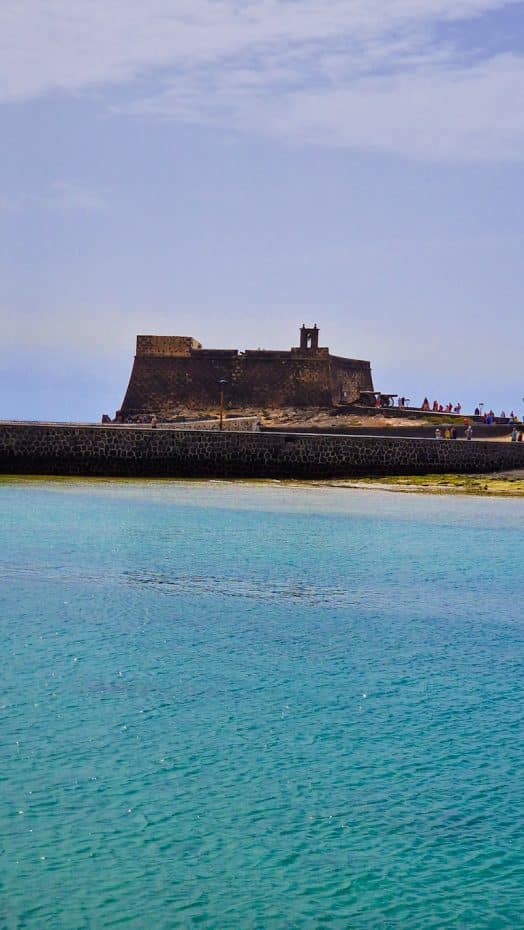
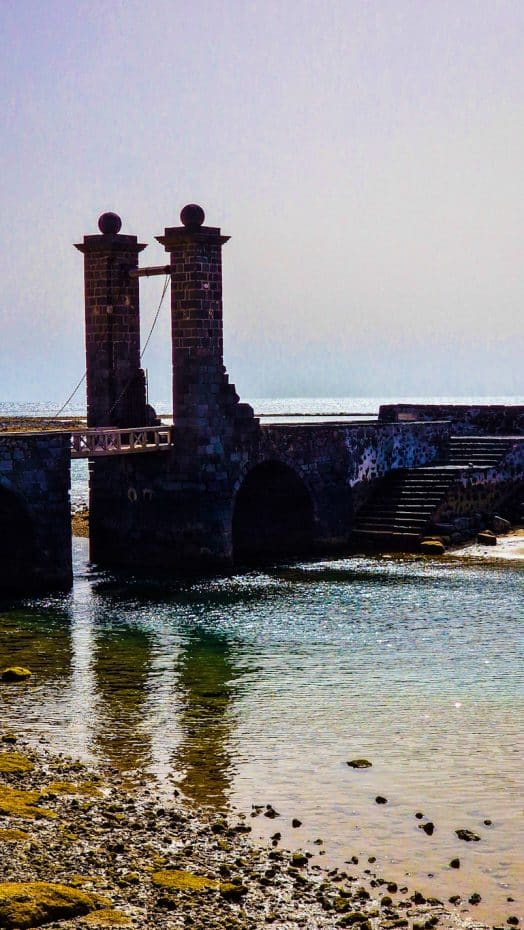
It was originally built of wood, but was burned by pirates. In the 16th century it was replaced by a stone castle to protect the port and the city.
The fortress was declared a National Historic Monument in 1972 and today houses a small ethnographic museum.
18. San José Castle / Museum of Contemporary Art
The Museum of Contemporary Art of Lanzarote is considered one of the most important of the Canary Islands.
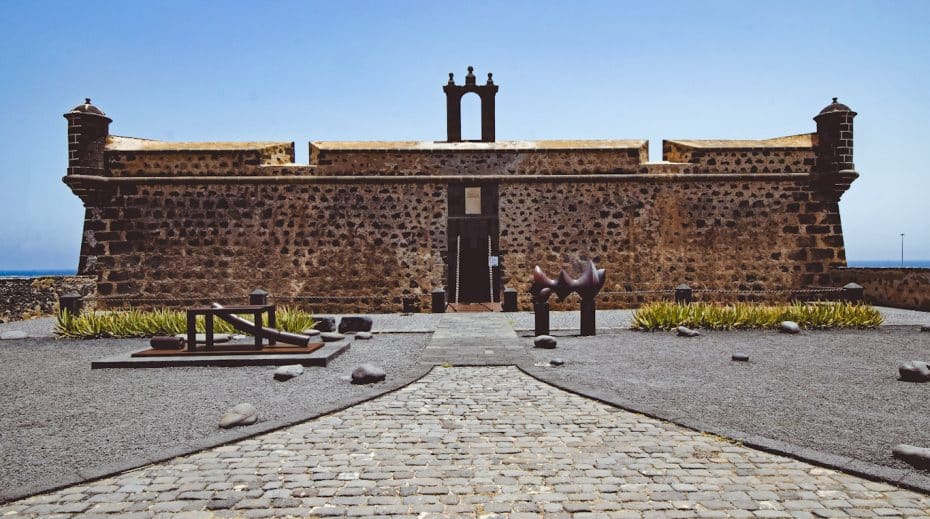
The exhibits and permanent collection are housed in the spaces of the Castillo de San José, an 18th century defensive fortress overlooking the ocean and just minutes from downtown Arrecife.
Inaugurated in 1975, as its name suggests, the museum contains modern art objects. Its interior was designed under the supervision of César Manrique.
19. The Hervideros
On the west coast of the island, Los Hervideros is one of the most impressive landscapes of Lanzarote.
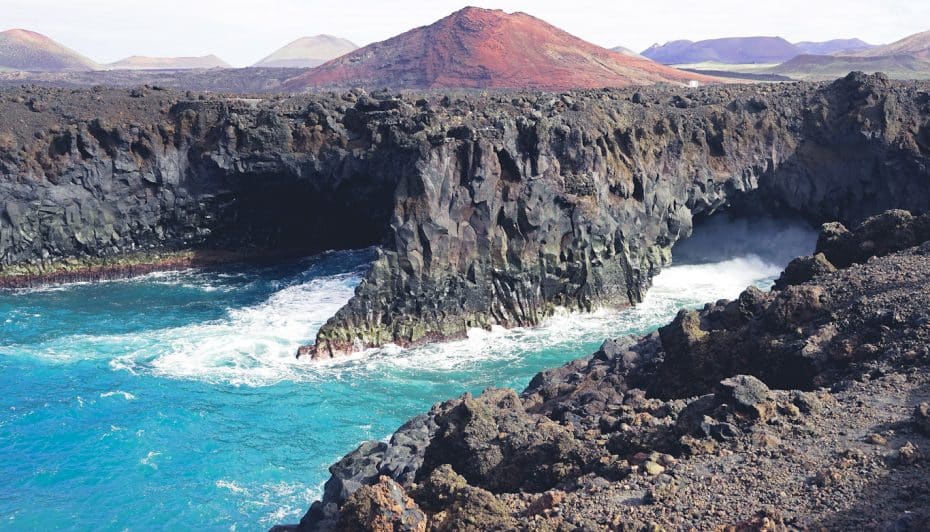
The landscape consists of several caves excavated in the lava, similar to an intricate labyrinth where the sea waves break the walls of the caves, flooding them and creating a changing and thundering panorama.
20. White Beach
Another of the things to see in Lanzarote is Playa Blanca.
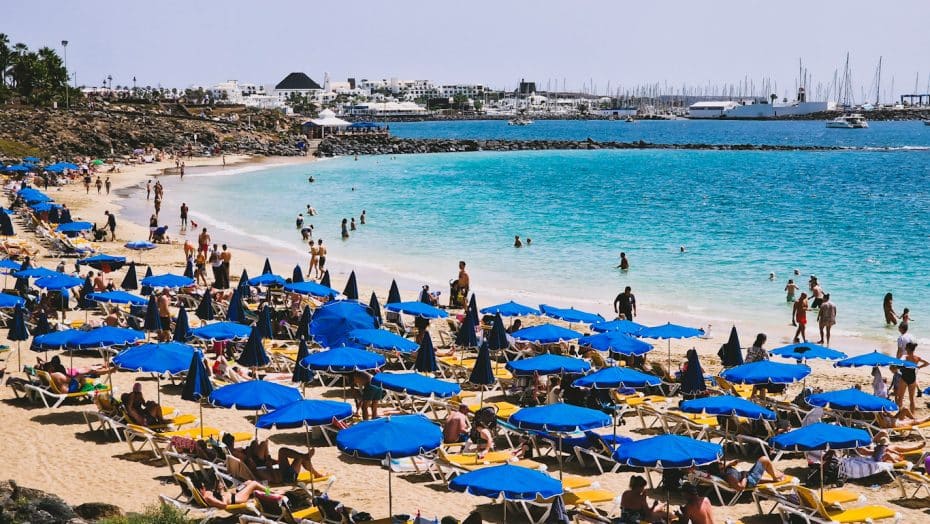
It is one of the 3 great resorts of the island because, both in the town and in its surroundings, there are some of the most beautiful and sheltered beaches of the island.
From this area ferries depart to Fuerteventura and in recent years has become one of the most popular tourist areas of the Canary Islands. It is famous for its beauty and a quiet and ideal destination for the whole family to relax.
The town is rich in services and has a wide range of hotels, surrounded by numerous bars, restaurants, stores, shopping centers and one of the best marinas in Lanzarote. The promenade area is very lively, with many stores and nightclubs.
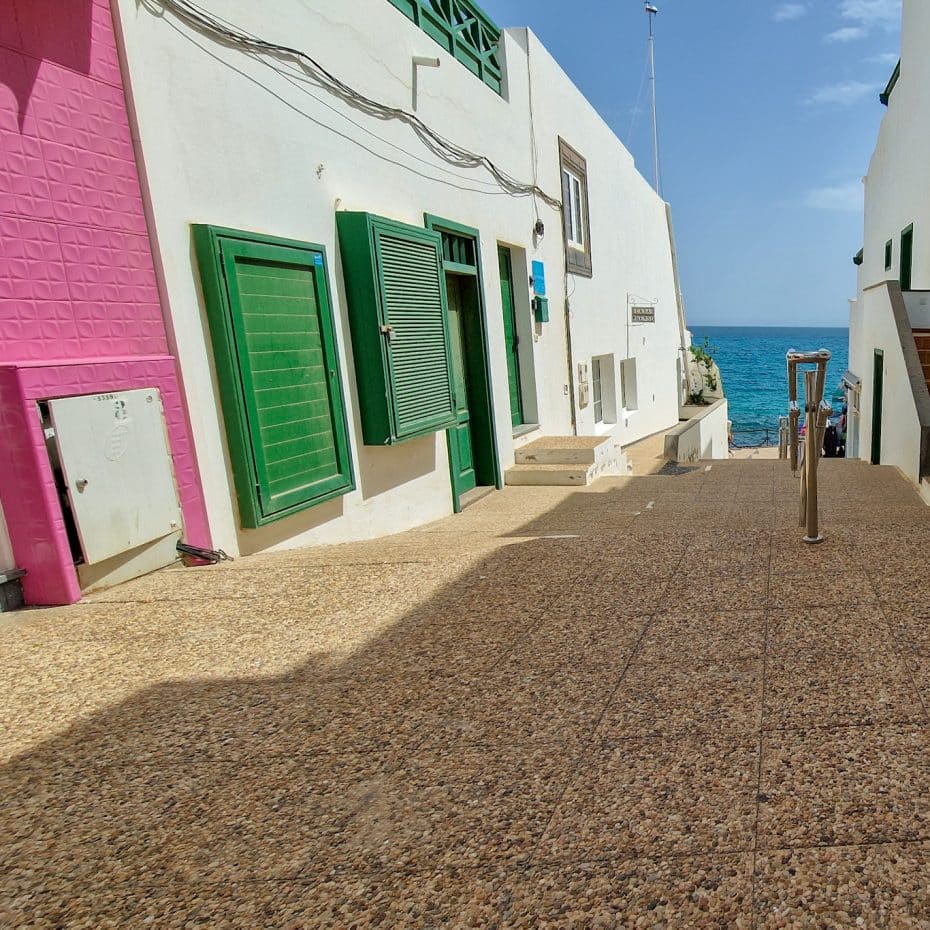
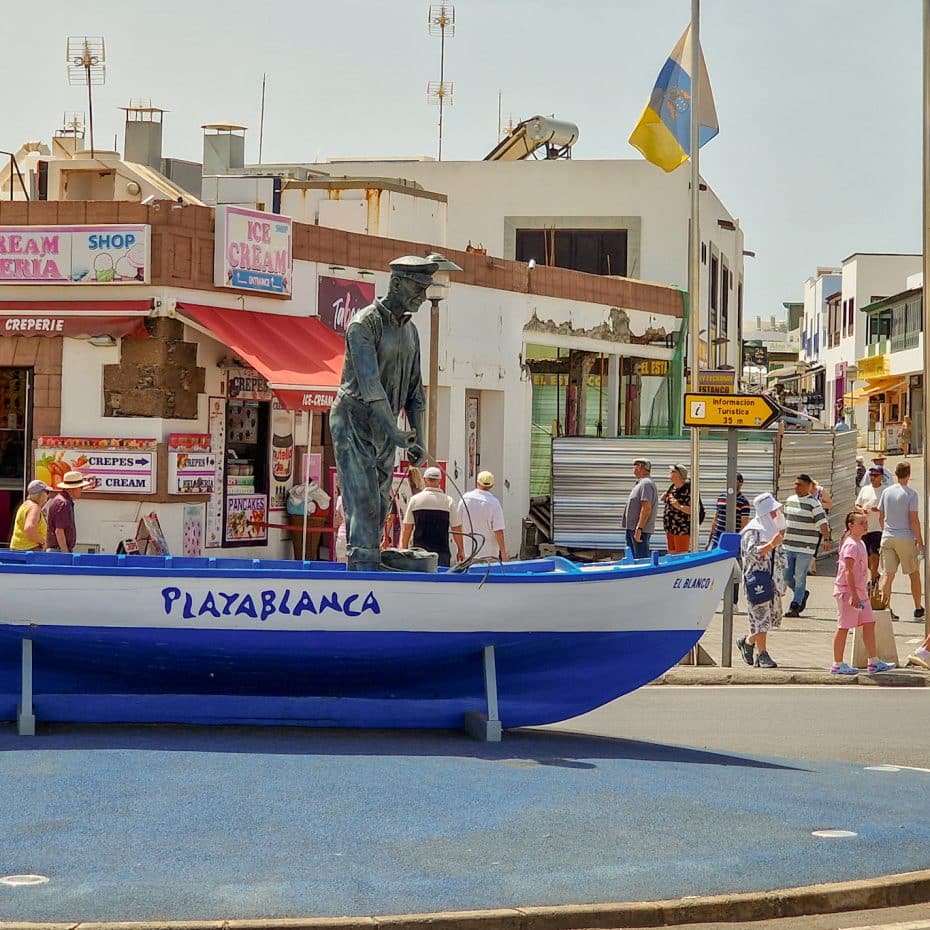
In Playa Blanca there are excellent and quiet beaches of crystalline waters and natural beauty that also offer good entertainment services. The beaches within the nature reserve, such as Papagayo, are easily accessible by bicycle or on foot.
21. Costa Teguise
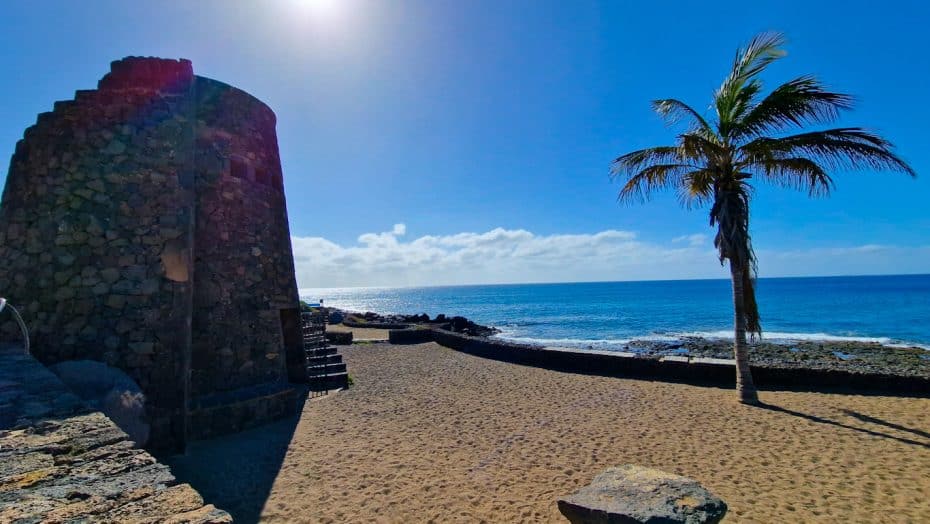
The beaches of Costa Teguise are located in the eastern part of Lanzarote, precisely in the municipality of Teguise. It is one of the most important tourist centers of Lanzarote.
The promenade of this seaside resort stretches along 5 kilometers, along which there are many stores, restaurants, hotels and several places to have fun.
It offers a wide range of restaurants with excellent quality services for all tastes. It receives visitors from all over the world for its beautiful beaches, rich gastronomy and diverse possibilities for recreation and entertainment.
The beaches of Costa Teguise stand out for their clear sand, excellent climate and dreamlike landscapes.
22. Puerto del Carmen
Puerto del Carmen is a coast located southeast of the island of Lanzarote.
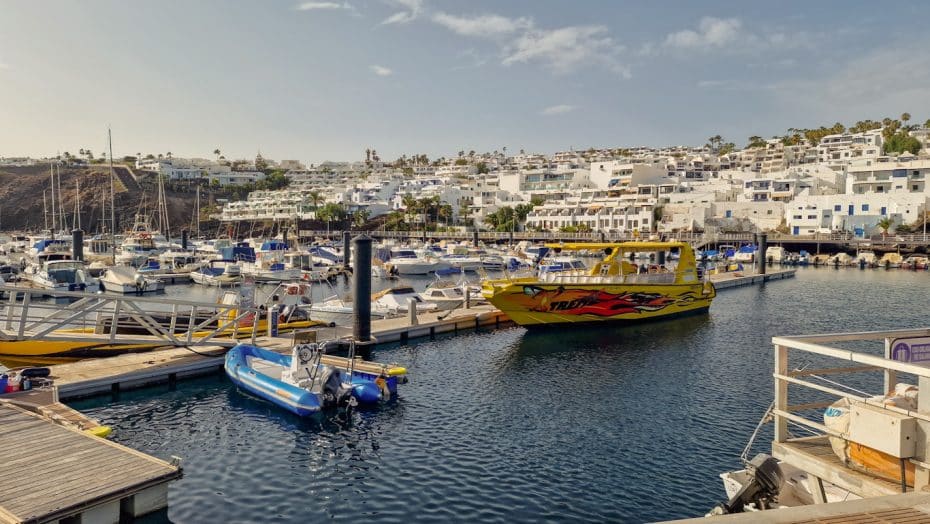
It is a quiet and well preserved village that is also particularly well located in relation to the capital Arrecife and the different tourist sites of the island.
Staying in Puerto del Carmen is one of the best options, it allows you to visit the island in a relaxed way with easy access to the whole island.
From its port depart numerous tours and water activities to explore the island and its natural environment.
23. Downtown Arrecife
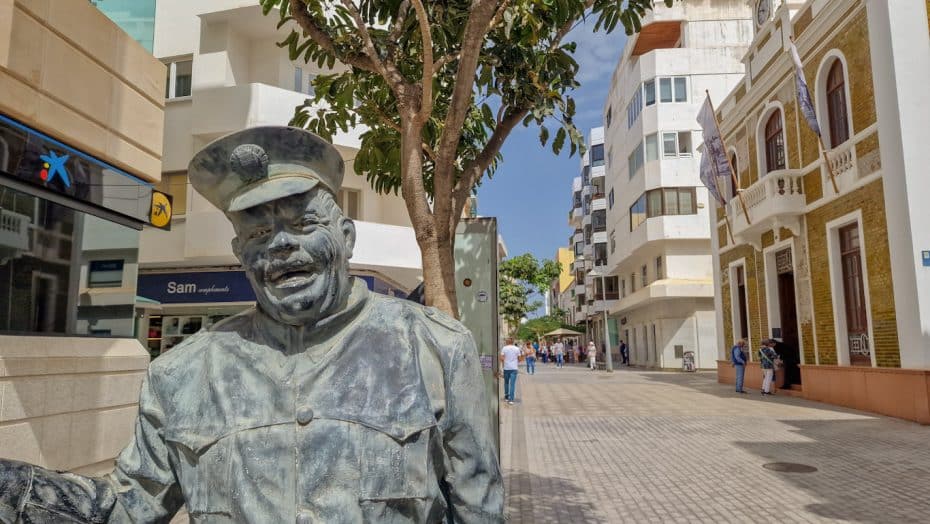
Arrecife is the capital of Lanzarote and is home to almost a third of the island’s total population (about 46,000 inhabitants). Lanzarote’s main port and airport are also located here.
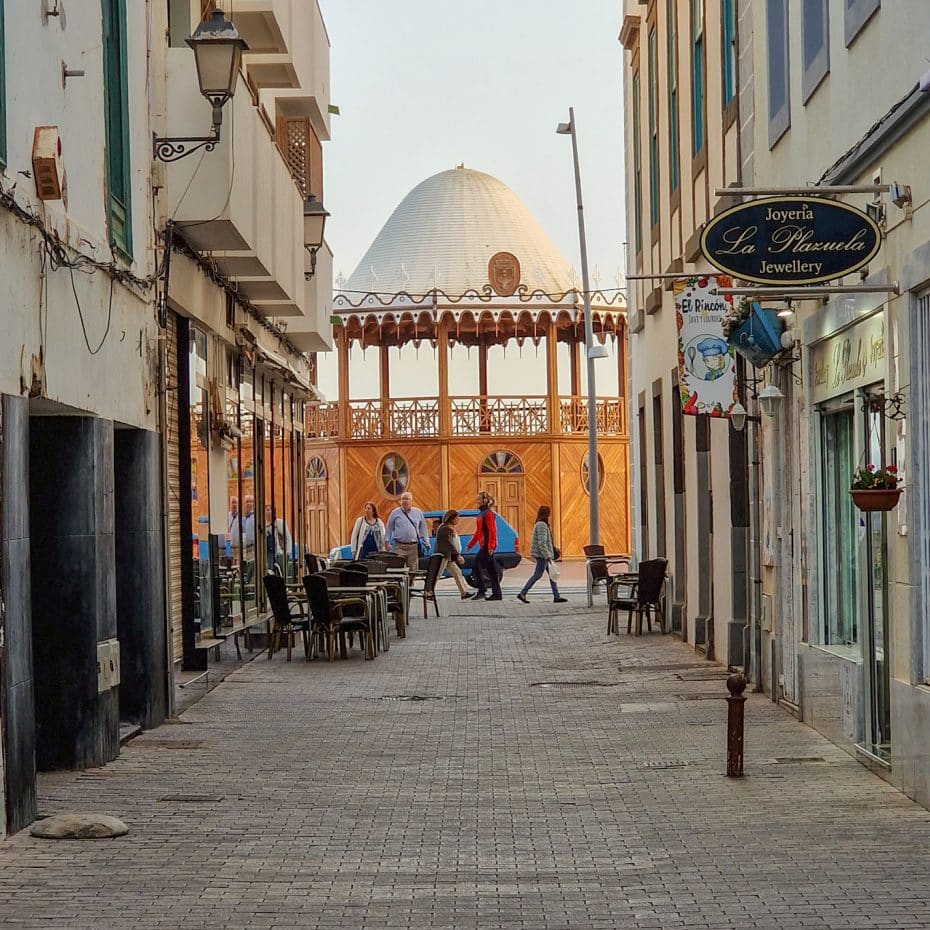
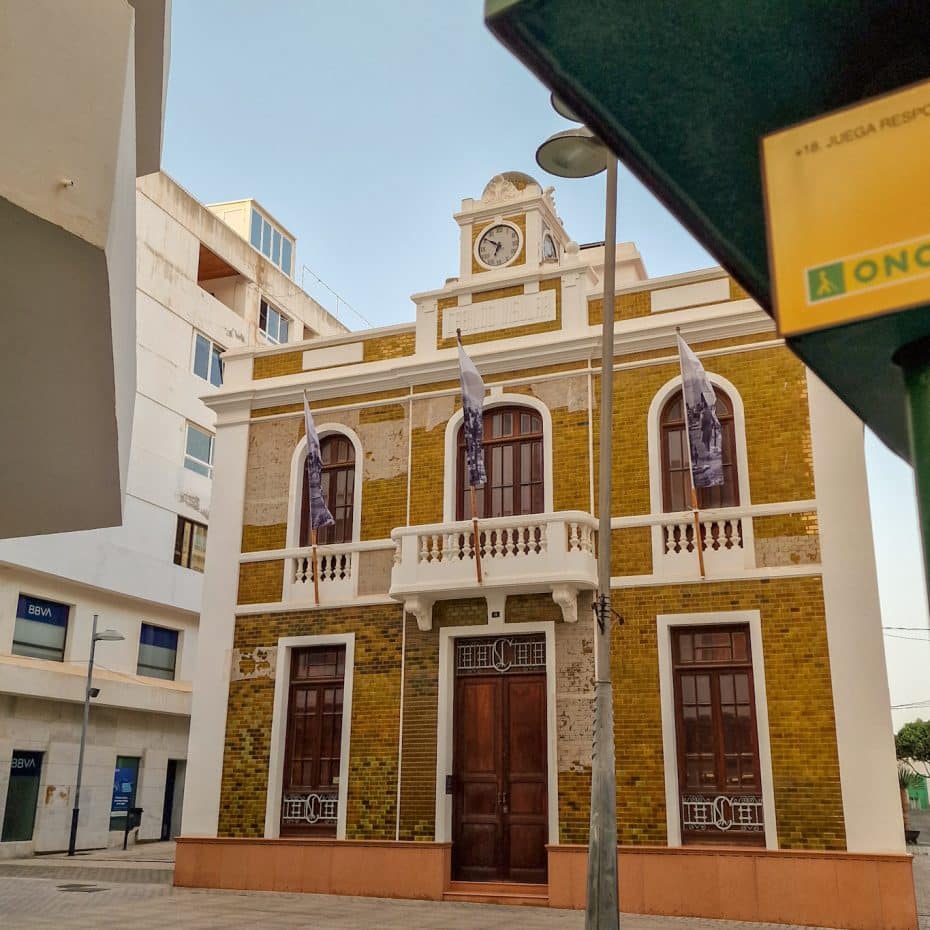
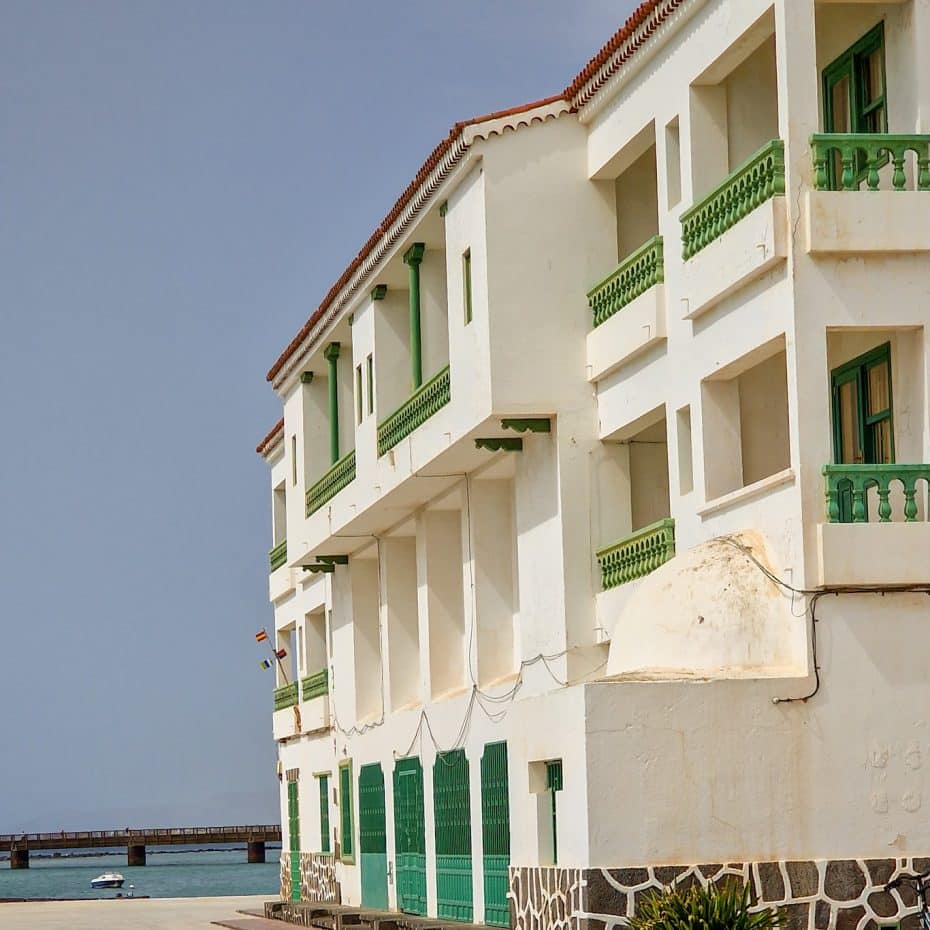
Originally a small fishing village, it grew in importance until it became the capital of the island in 1852. Today it is a shopping paradise. There are countless opportunities for shopping, especially along the pedestrianized Calle Léon y Castillo and in its large shopping center.
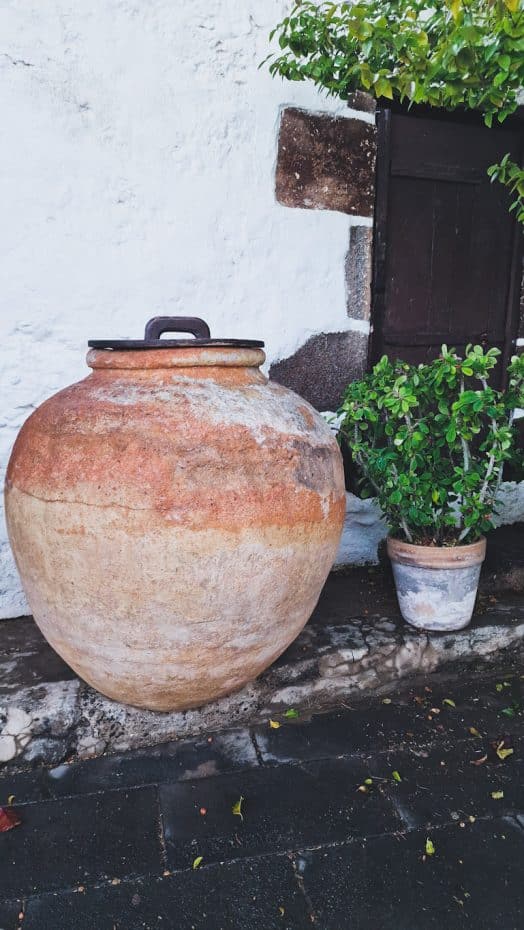
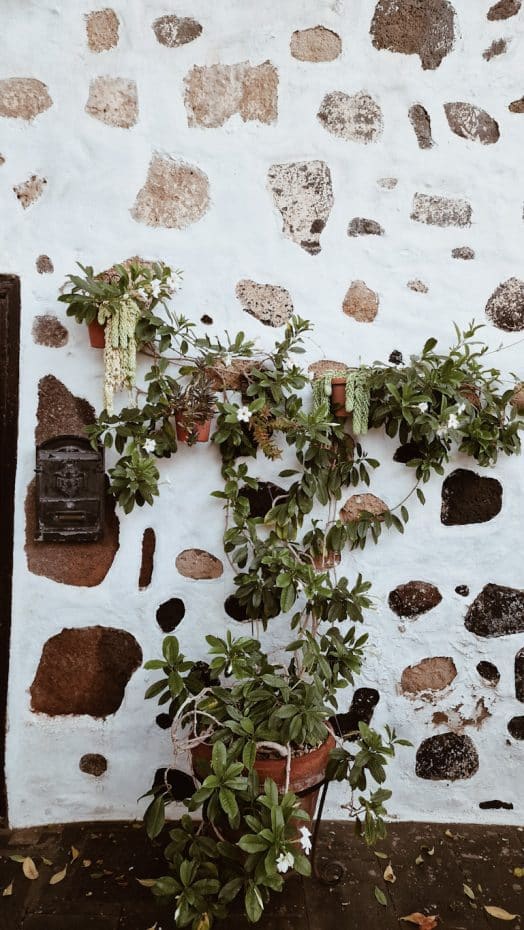
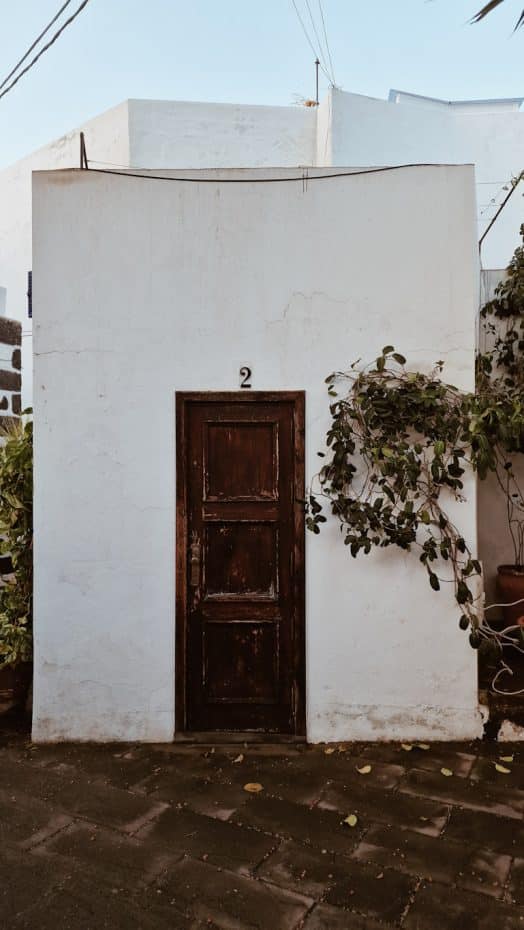
Atlantic Museum
This is the only underwater museum in Europe.
Opened in 2016, the Atlantic Museum of Lanzarote consists of ten underwater installations and aims to raise awareness of environmental issues and the use of natural resources.
The sculptures are located about 15 meters deep, in an area of 100 square meters and were created by artist Jason de Caires Taylor, who has been involved in the defense of the oceans for years, to adapt perfectly to environmental conditions without affecting marine life.
To visit the Atlantic Museum it is necessary to have a diving certificate up to 15 meters, which can be obtained through classroom courses of 1 or 2 days.
25. José Saramago House-Museum
This is the house in which the writer José Saramago lived for the last 18 years of his life and which represents a kind of treasure chest of his most cherished memories and objects.
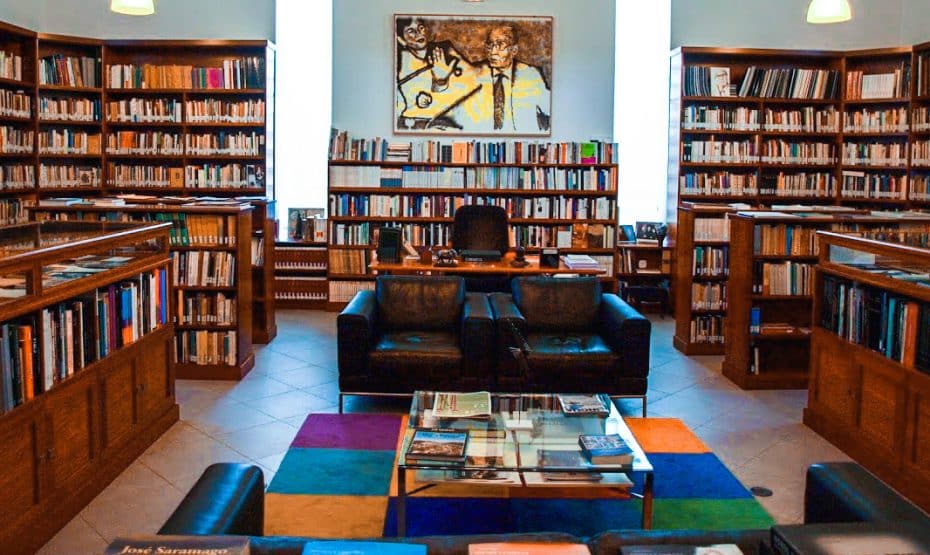
José Saramago, Nobel Prize for literature in 1998, had chosen Tías as the place from which to dedicate himself to the pleasures of writing, inspired by the beautiful sunsets he enjoyed from his wonderful garden.
Inside you can visit José Saramago’s library, study and olive grove , as well as a small souvenir store.
26. House-Museum of César Manrique
This is the house where César Manrique lived until 1992, the year of his death. In 2013, the house was opened to the public as a house-museum.
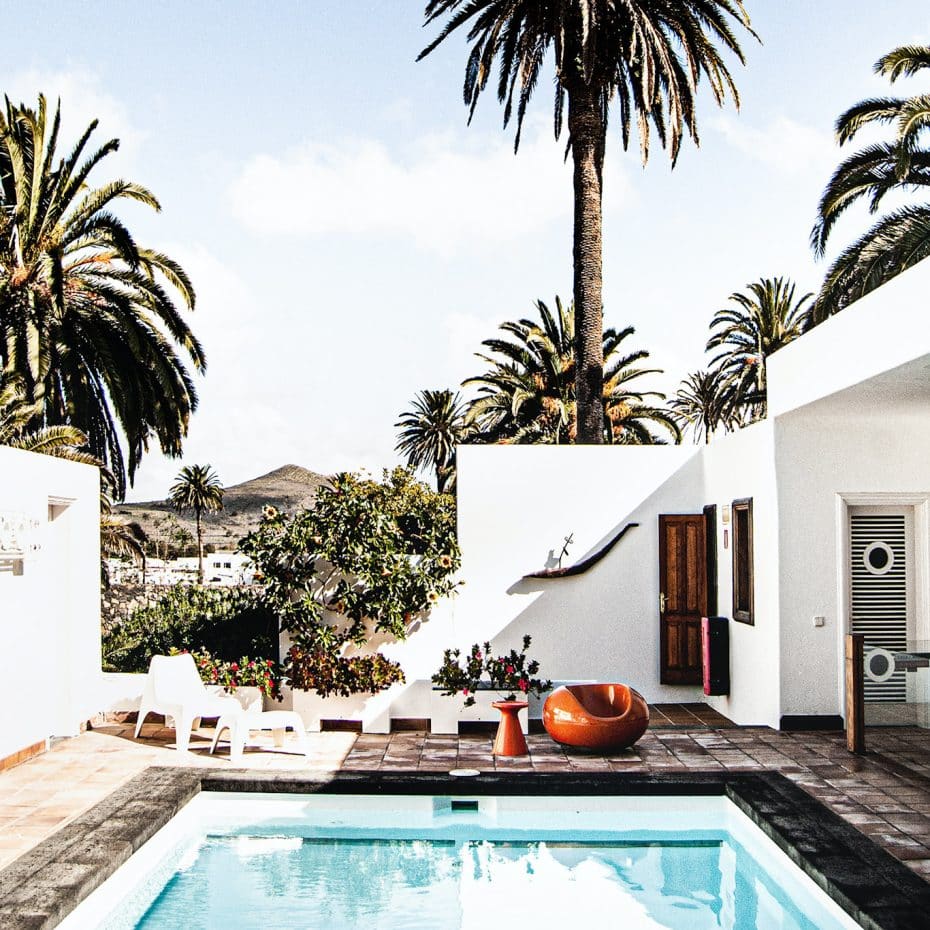
It is located in the middle of a lush palm grove in the picturesque village of Haría, in the northern part of Lanzarote, where the traditional ways of life of the island are still preserved.
Here the artist found the tranquility and contact with nature that he loved so much. In 1986 Manrique began the construction of this house by adapting a ruined finca. He used the language of traditional architecture reconsidered in a modern key, giving importance to comfort and aesthetics.
In addition to the private rooms, the tour includes a visit to the workshop where the artist worked and where everything (pigments, boards, easels, unfinished paintings) has been left exactly as Manrique left it before his death.
27. LagOmar Museum
Another place to visit in Lanzarote, for the spectacular architecture of César Manrique and his friend Jesús Soto, is LagOmar, the house-museum of Omar Sharif.
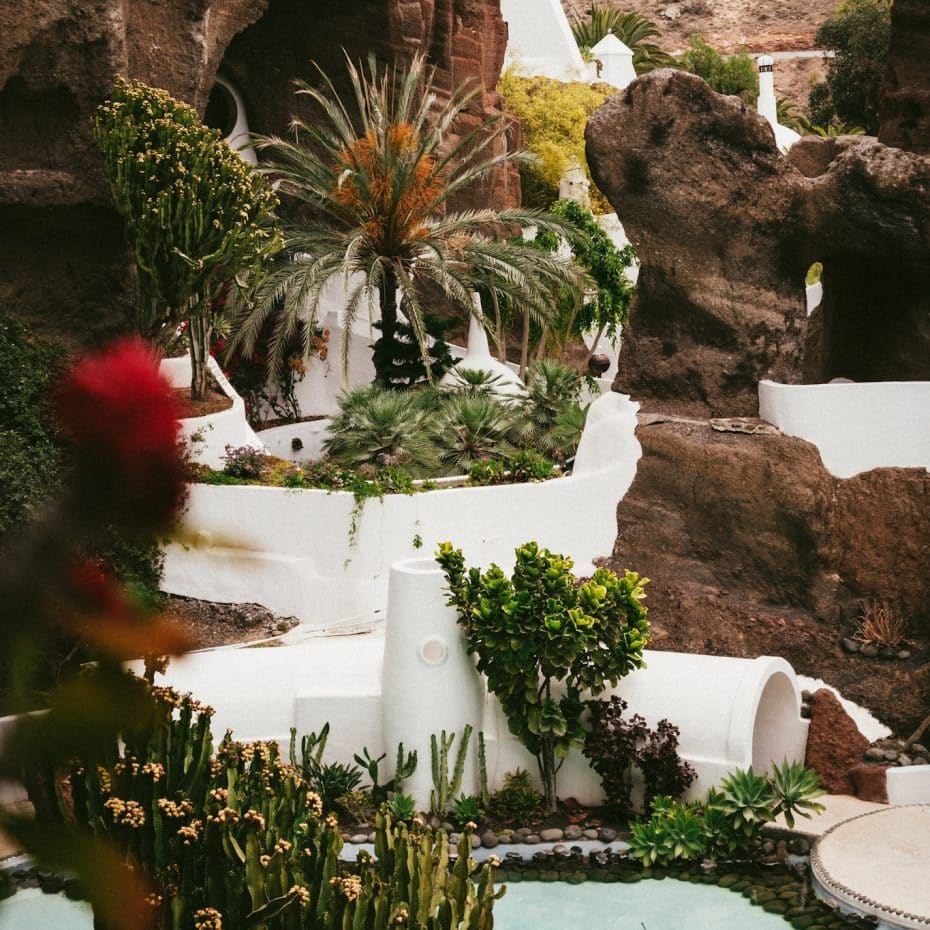
Lagomar is a house-museum but also one of the most spectacular private residences on Lanzarote.
Designed by architect César Manrique and majestically built around the very rocks from which it was carved, the house includes natural labyrinths and volcanic caves.
28. Stratified city
Also known as Antigua Rofera de Teseguise, the Stratified City is a truly peculiar place located along the LZ-404 road. It consists of volcanic rocks solidified and molded over the years by meteorological phenomena.
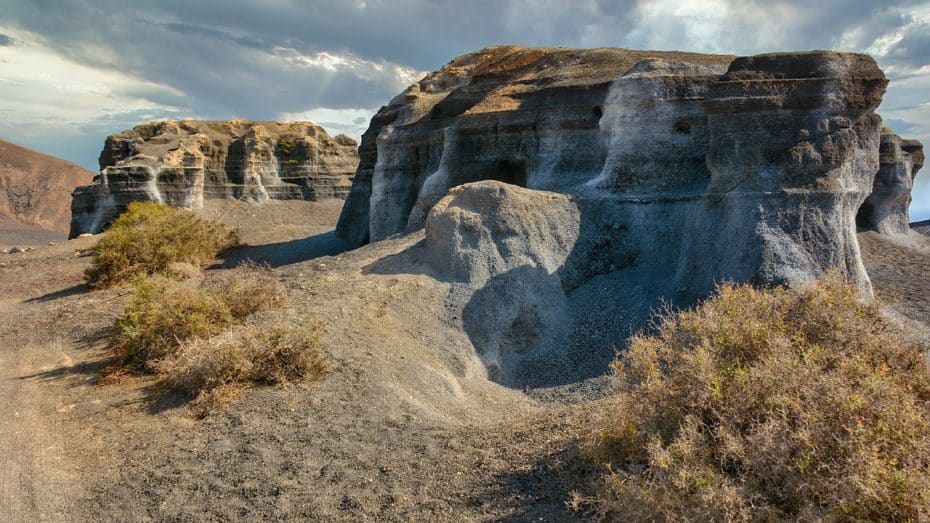
Undoubtedly the contrasting colors of the surrounding landscape and volcanic sand have made this place truly fascinating and unique in its kind.
29. Dolphin Sighting
The Canary Islands are famous for the variety of cetaceans present in the archipelago throughout the year.
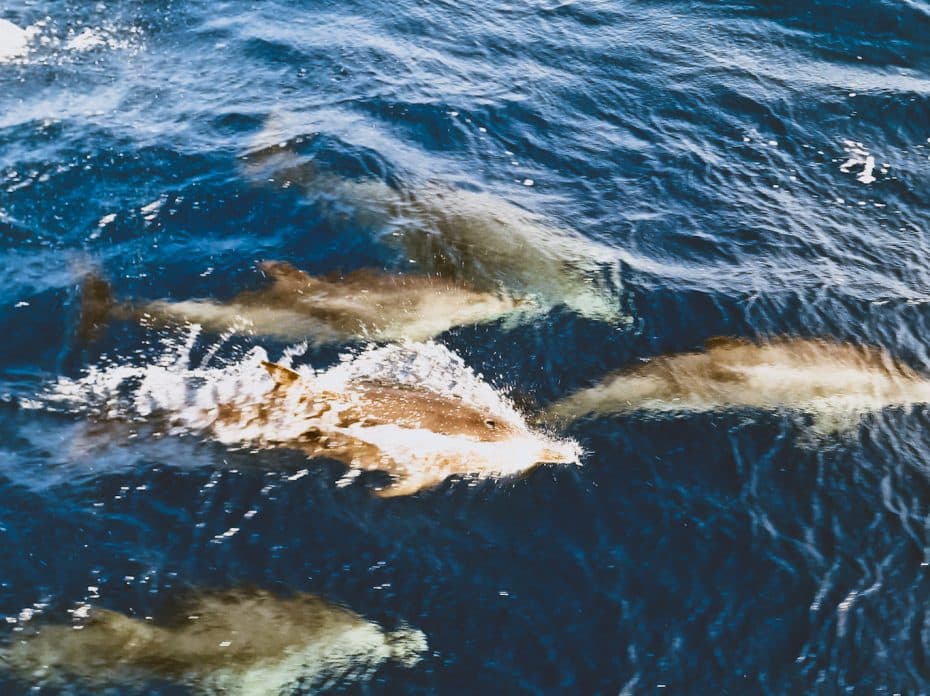
One third of all dolphin and whale species pass through Canarian waters or are permanent residents. Lanzarote is located in the West African region, specifically in the subtropical zone, and this place is privileged with a very diverse marine life.
If you are lucky, the encounter with dolphins is simply magical and a must-see activity in Lanzarote.
Most dolphin watching tours depart from the town of Puerto del Carmen.
30. La Graciosa
One of the most beautiful trips that can be made from Lanzarote is undoubtedly the island of La Graciosa, a small island located north of Lanzarote, which is separated by the strip of sea called “El Rio” of which we spoke earlier.
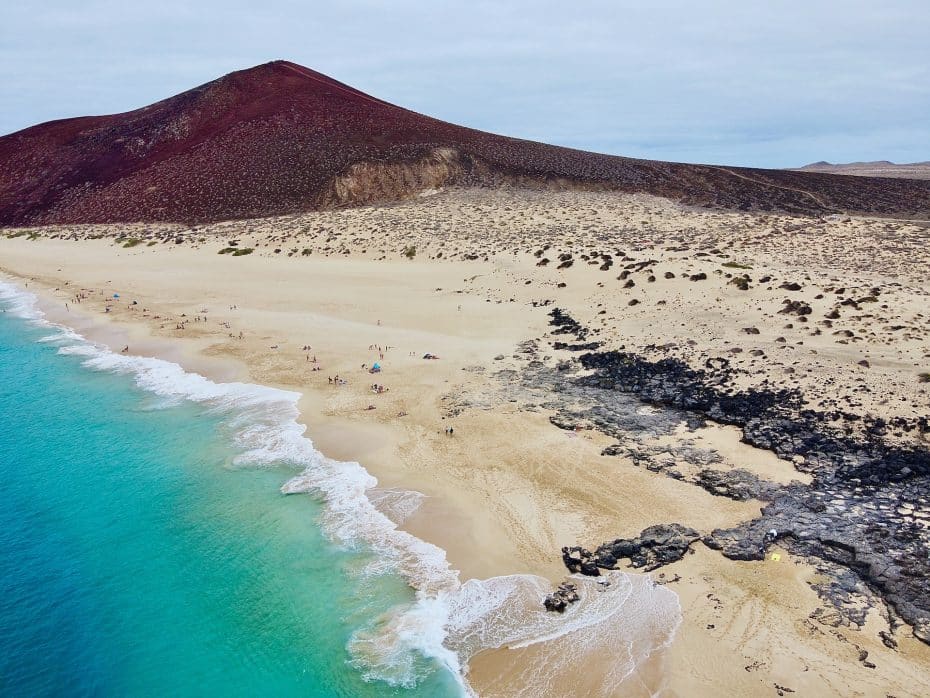
La Graciosa is part of the Chinijo archipelago together with the islets of Montaña Clara, Roque del Este, Roque del Oeste and Alegranza, and is the only island that can be visited by tourists.
Since 2018 it has officially become the eighth island of the Canary archipelago and, with its 29 km² and 658 inhabitants, it is the smallest inhabited island of the Canary Islands.
There are only two urban centers on the island: La Caleta del Sebo, where the ferries arrive and where the tourist services are located, and Casas de Pedro Barba, where there are only private homes.
The island is car-free and has no paved roads. In fact, all roads are dirt or sand and motor vehicles are prohibited with very few exceptions.
While La Graciosa is a tourist destination in its own right, it can easily be visited in one day, with the first ferry in the morning and returning with the last one.
Tools for a perfect trip to Lanzarote



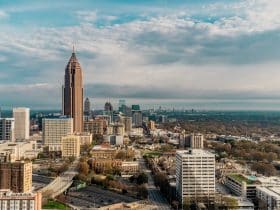
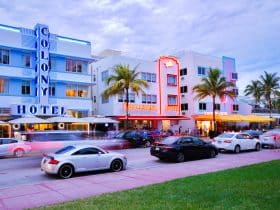
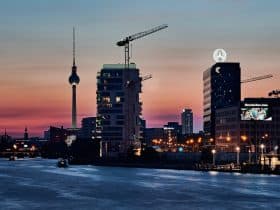
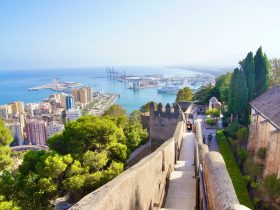
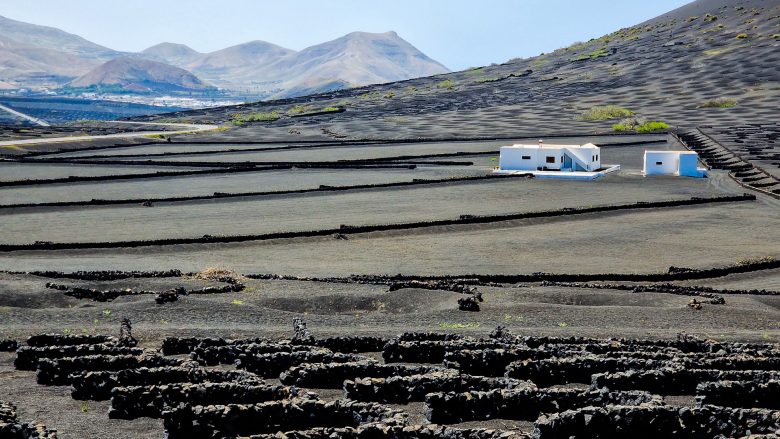

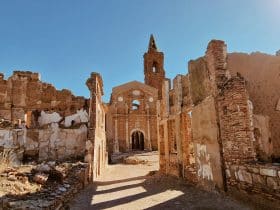
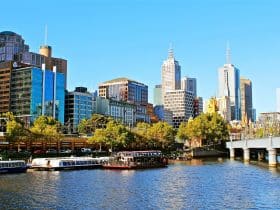
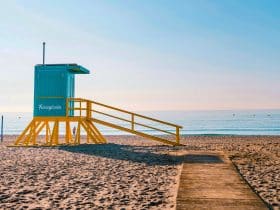
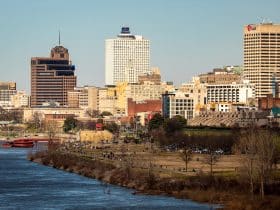
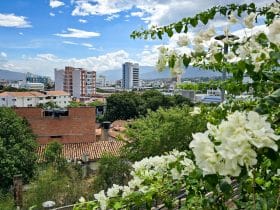











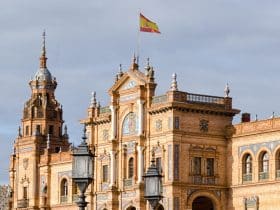
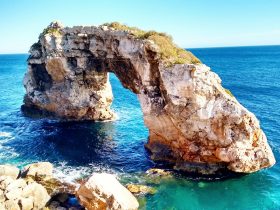
Leave a Reply
View Comments